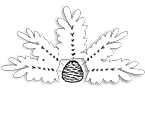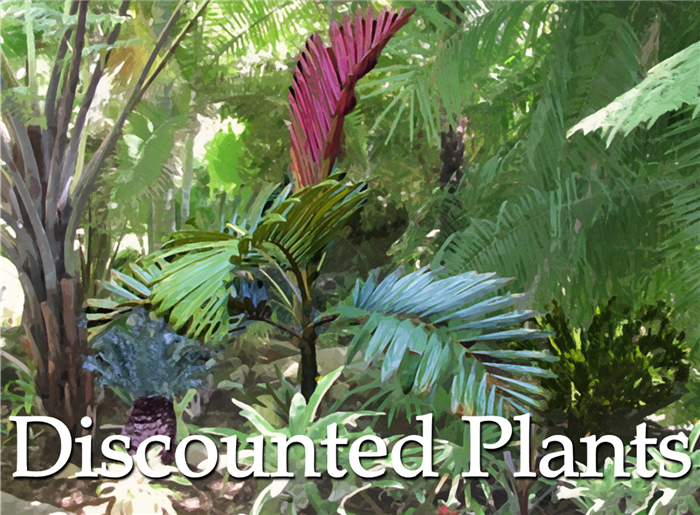Pictures of actual palm seeds and palm tree fruits
by Phil Bergman
Description of Article
This article discusses fruits formed on pam trees and the seeds contained within the fruit with special emphasis on how to tell if seeds are mature and capable of germination.
Introduction
Like most other types of trees, palm trees mainly propagate by the production of seeds. This does not mean that one cannot propagate a palm by other means, but in nature the main technique for survival of the species is through the production of seeds. Seeds are produced by flowers or inflorescences. These flowers may be: either both sexes on the same plant or just one sex with male and female trees. Seeds develop on these flowers and, when mature, typically fall to the ground and are ready or near-ready for germination. I am writing this article to help the reader recognize palm seeds, appreciate the diversity in colors and shapes of seeds and to know when seeds are mature and ready for collection and germination.
ITEMS YOU WILL LEARN FROM THIS ARTICLE
- What is a palm flower?
- Do palm trees die after they flower?
- What is a palm fruit?
- What is a palm seed and how it differs from the fruit?
- How do I tell when seeds are ripe and ready to harvest?
- What unusual palm seeds are there?
- How to tell if palm seeds are good and will germinate
- Are any palm seeds edible?
PALM TREE FLOWERS
On the Internet, you will find very little written about the flowers of palm trees. This is understandable, but a bit peculiar as the palm’s flowers are one of the most important structures by which taxonomists name a species. Herbariums throughout the world are filled with flower stalks of almost all known species. But, apart from textbooks, little is on the Internet on palm flowers. Flowers, or inflorescences, are borne from the trunk of the tree, typically located below the canopy of leaves. Sometimes the flower spike (spadix) can emerge in an interfoliar location among the leaves. With the genus Corypha, the flowers protrude far above the crown of leaves with a spectacular display. The Corypha flowers are probably the largest flowers in the Plant Kingdom. Most flowers talks are branched although some are simple and linear. These emerge within a sheath which is called the spathe. As development progresses, these spathes may remain attached or fall to the ground leaving the flower behind on the tree. The seeds that are formed actually develop while attached to the stems of the flower.
As in most species of living things, there are male and females. This applies to the flowers of palm trees as well. Pollen must be transferred from a male flower to a receptive female flower in order to produce fertile seeds. This is usually accomplished by insects or wind. But, there’s one more thing you must understand about seed production. This is that, among the world of palms, sexual characteristics different. All are not the same. Three are three types of flowers that can occur with palms:
1. Hermaphroditic flowers: Each flower has both male and female flowers parts on the same flower
2. Monoecious species: A palm species that has both male and female flowers on the same tree. This can occur in two ways. Individual flowers can be found on the same main inflorescence or, on the same plant, there are separate male and female flowers close together.
3. Dioecious: Any individual tree of this type will either be a male or female and only make flowers of that sex. Pollen must travel from the male tree to the female tree to pollinate the female flowers. Without this, no seeds will occur.
All three of these flower types apply to palms. You can see how critical it is that insects or wind disperses the pollen, even if flowers are in close proximity. Also, this means that, if you want to produce seeds of a dioecious species, you must have both a male and a female plant. Examples of dioecious species include all Chamaedorea, Ravenea, Bismarckia and Phoenix.
Below are some photos of palm flowers or flower spikes.
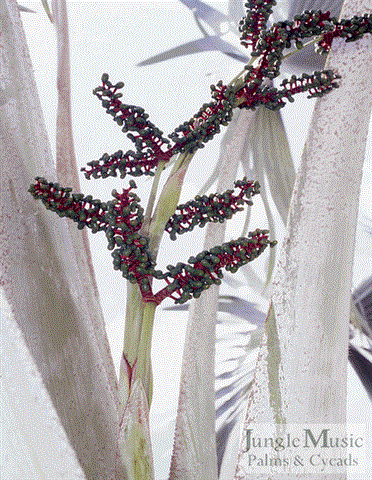
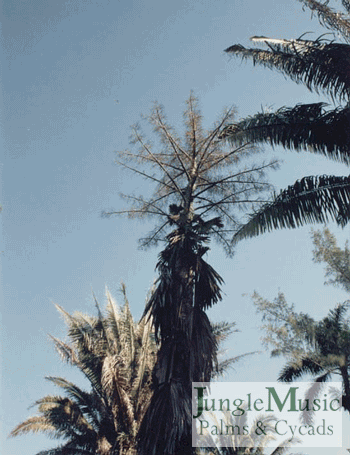
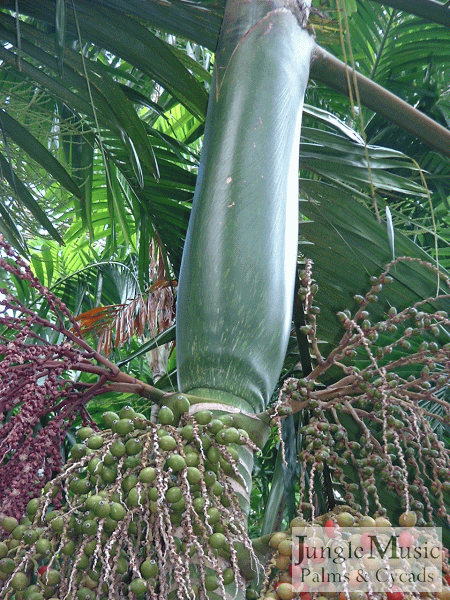
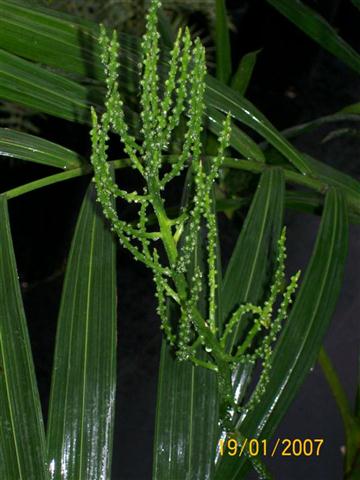
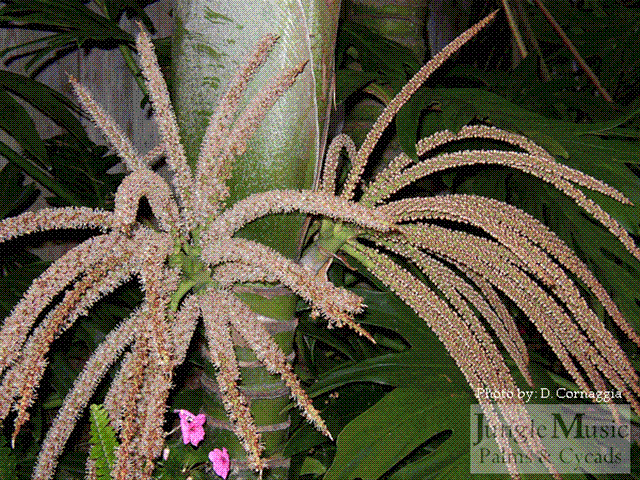

emerging among the lower leaves
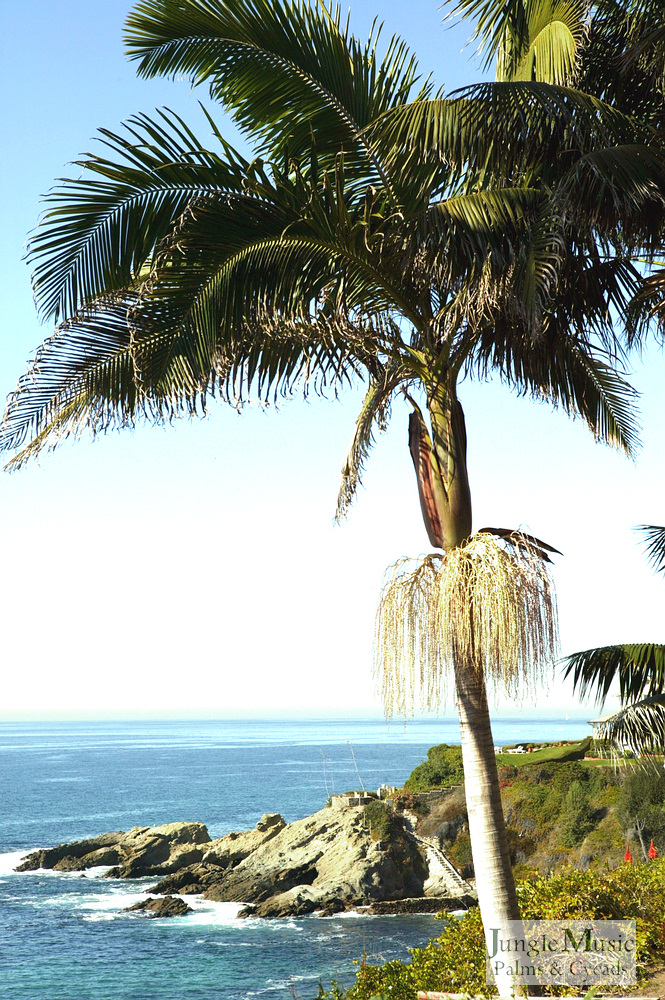
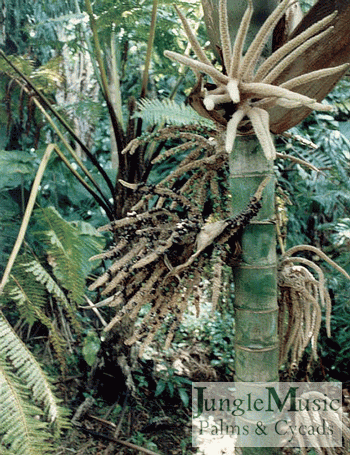

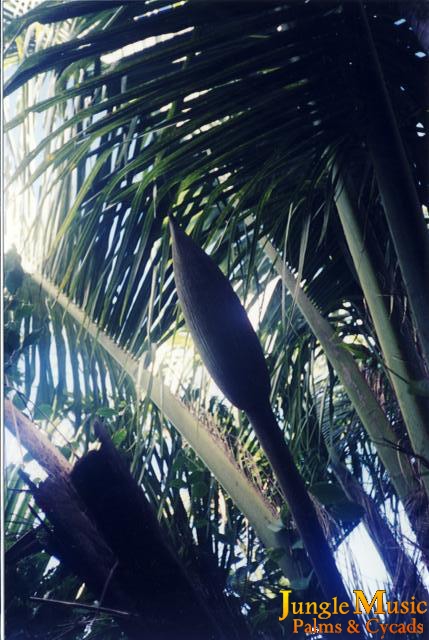
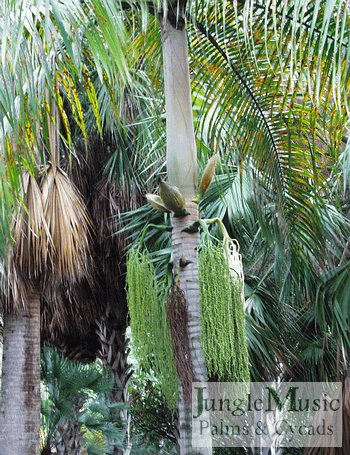
the crown shaft with new ones coming above

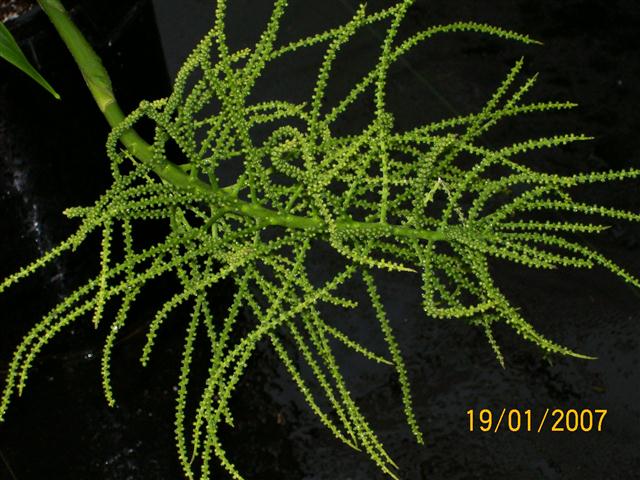
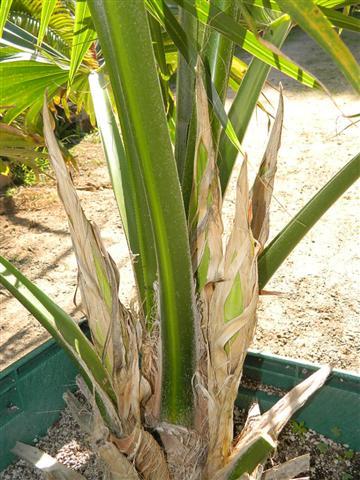
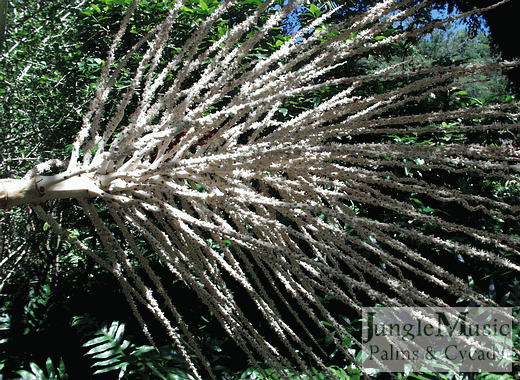
PALM TREE FLOWERS AND MONOCARPIC PALM SPECIES THAT DIE AFTER FLOWERING
Most species of palm trees will produce flowers and seeds and do this on a yearly basis. The time it takes for flowering and seed production is variable, but is usually about five years or more from the juvenile age to occur. In more tropical areas where growth is faster, flowering occurs in less time. With larger species, the trees are usually large enough so the blossoms are well above the ground, perhaps protecting flowers from consumption by animals. Palms can produce multiple flowers at once or just produce a single flower.
There are a number of genera of palms that do not flower until the end of their lives. These are referred to as monocarpic species. The definition of “monocarpic” is that the plant flowers only once and then dies. This definition may be expanded to include that the plant dies once flowering is complete. In other words, some species put out a series of flowers and when these are complete, the plant dies. Death refers to the loss of that stem or trunk. If a plant has multiple trunks (suckering species), only the trunk that flowered will die. Realize the difference between this phenomena and that seen with species that produce flowers perpetually.
Examples of palm genera that are monocarpic includes Arenga, Caryota, Corypha, a few species of Daemonorrops, some Metroxylon, Tahina, and Wallichia. With Arenga and Caryota, there are suckering species where only the flowering stem will die after flowering. Caryotas are an interesting genus. Single stem species such as Caryota urens and gigas grow to their mature height. Suddenly one day one might notice the browning of multiple lower leaves in rapid succession. This progresses up the trunk, consuming the green color of as many as four green leaves. After this a blossom appears way at the top of the trunk. My feeling is the plant is stealing nutrition (chlorophyll) from the lower leaves in order to make the blossoms. The palms then produces as series of blossoms over several years, each new blossom(s) below the last. This proceeds down the trunk. When blossoming is occurring near the lower trunk, the palm finally dies. Below are some pictures of monocarpic species.
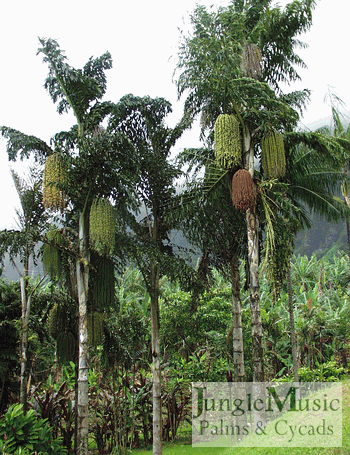
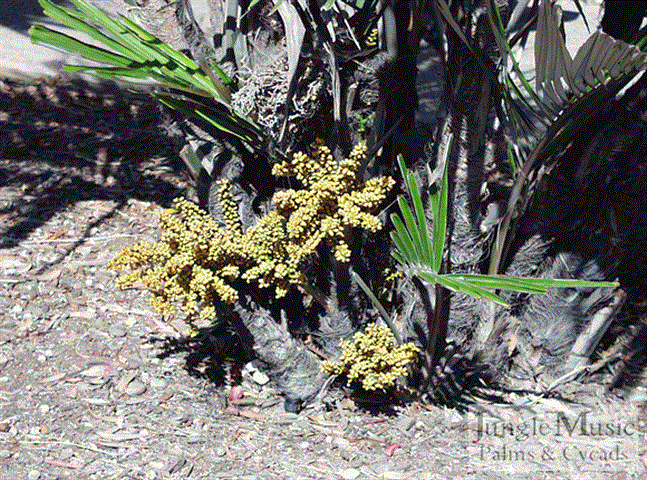
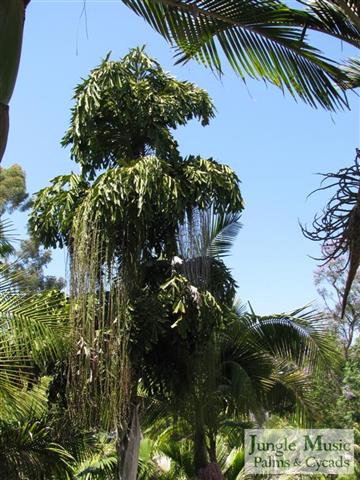
multiple levels on the trunk.
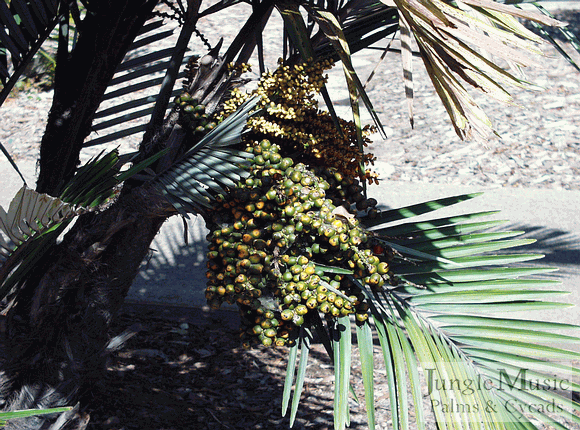
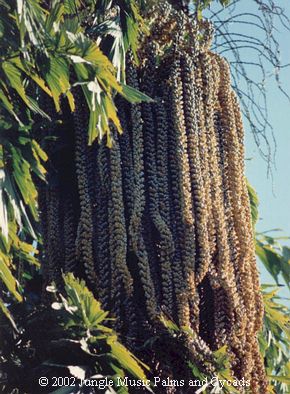
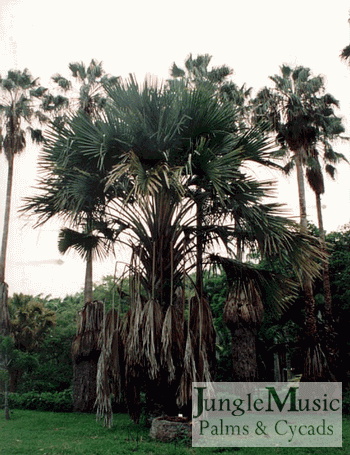
decline and perish
DIFFERENCE BETWEEN PALM SEEDS AND PALM TREE FRUIT
In nature, trees produce seeds for propagation of the species. Almost always there is some type of protective coating around the seed. This coating may be hard and woody or soft and fleshy. Palm tree fruits are of both types. Formal botanical nomenclature used to describe palm seeds is below. Note there are four layers to the “seed”:
Epicarp: The outermost, thin layer of tissue surrounding the seed. It’s like an outer “skin” and is often colored
Mesocarp: The next layer in, thicker, fleshy and what most would consider the ‘fruit” of the seed. Is is usually colored as well.
Endocarp: The firm tissue layer found inside the fruity layer and surrounding the inner seed, protecting it. It is protection for the inner endosperm and is usually brown, tan or some earth type color.
Endosperm: The name for the substance of the inner seed just inside the endocarp. It is a cellulose type material that provides food for the germinating and growing embryo or seedling. This is usually the largest and thickest layer of the palm seed and typically white. This is usually the largest and thickest layer of the palm seed and typically white or an off-white in color. It should not be foul smelling, dark colored or have cavities in a healthy seed.
Embryo: The genetic beginnings of the future offspring and located within the endosperm, often at one end of the seed.
The majority of fruit from palm trees (mesocarp) is the fleshy type. The thickness of this fruity later may be a sixteen of an inch thick. Or, it may be an inch or two thick. It contains water and keeps the seed from desiccating. Also, it is often fragrant (to animals) or has a brightly colored epicarp (which you see when looking at the fruit) . This promotes consumption of the fruit by animals and defecation of the now cleaned seed. This also provides seeds dispersion away from the seed producing parent tree.
The fruit of palms can be various colors. One commonly sees fruits that are black, brown, orange, pink, red or sometimes purple. Young palm tree seeds are green but near maturity develop their native fruit color. The seeds inside the fruit also have a native color. Palm tree seed color is usually tan, brown, black or other earth tones. They are never as bright and colorful as the seeds. The inner flesh of the seed (endosperm) is a very light color, usually white or tan. In this area you will find the embryo of the seed.
Below are pictures to show the difference between the outer fruity layer of the seed and the inner actual seed.
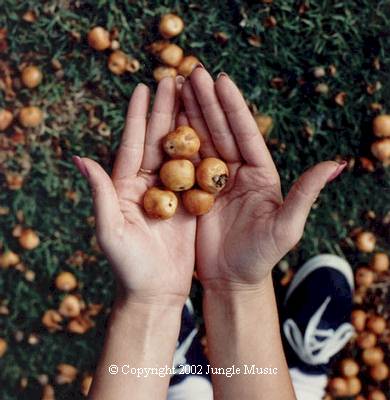
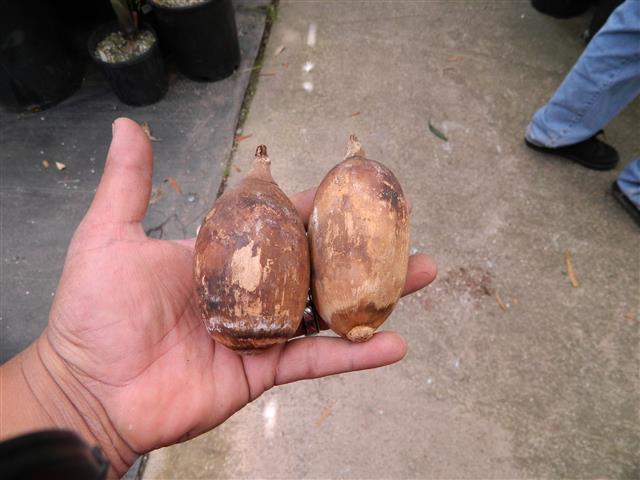
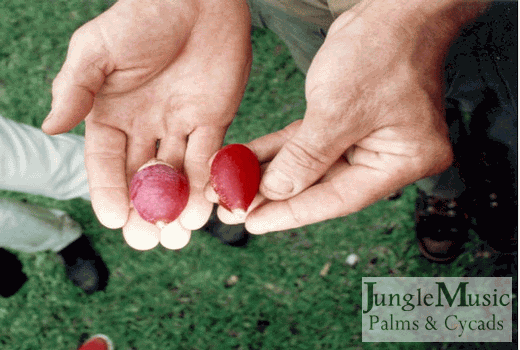
Note how colorful this red fruit is. Seed inside is brown
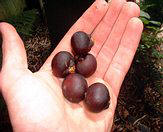
seed is inside and would be seen with cleaning.
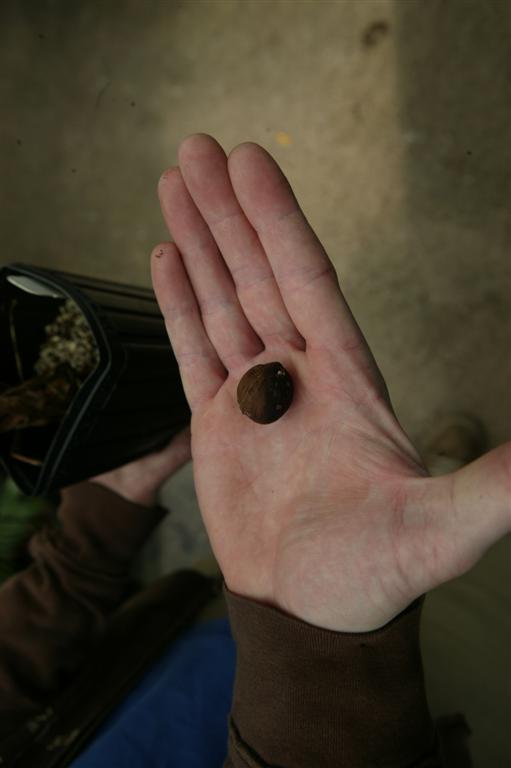
brown in color.
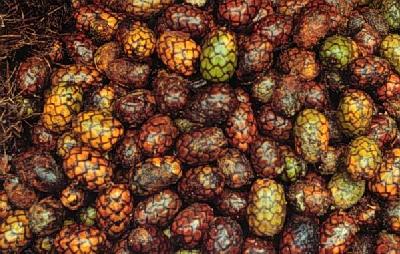
ruittcoat that is still on the seeds.coat that is still on the seeds

resting adjacent to the seed. This fruit is almost black.
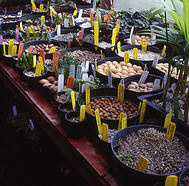
palm seeds awaiting germination
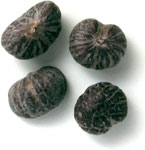
YOUNG FLOWERS, WITH NEWLY FORMED, IMMATURE PALM SEEDS
After an inflorescence has been pollinated, smaller individual flowers on that structure will close or fall away and a small seed embryo forms and begins development. At this very early stage, tiny seeds can be seen and they are usually white, a light tan or green in color. As the seeds on the flowers mature over time, their size increases but also the color of the seeds will change. These extremely young but undeveloped seeds eventually become a green color. Only with time will they develop their mature color, whatever it may be. These young green seeds are essentially not able to germinate, so collecting such seeds would be pointless. Maturity on the tree must occur. And, remember that any individual flowers on the flower stalk must be pollinated to produce viable seeds. Sometimes “duds” (infertile seeds) are produced without pollination. These can appear good but will fool you. Such duds are typically smaller in size, have peculiar shapes and many times don’t develop the expected mature color. Often they abort early.
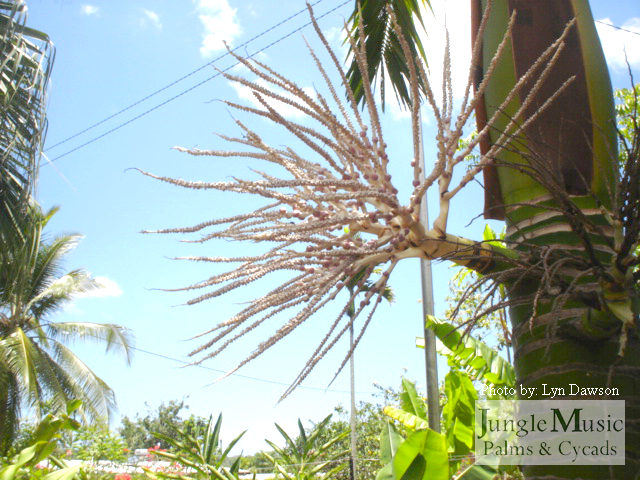
immature fruit
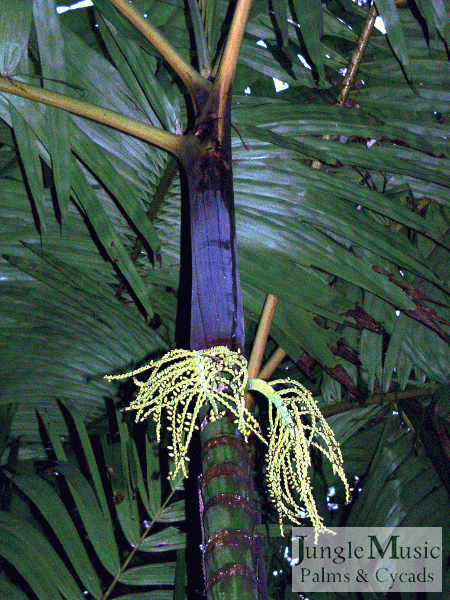
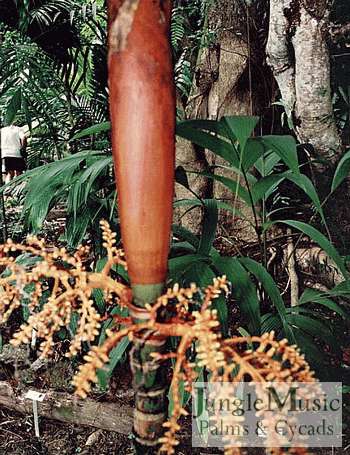
GREEN PALM SEEDS THAT ARE NOT FULLY DEVELOPED OR READY FOR HARVEST
Maturation of the seeds on a palm flower can take anywhere from three months to twelve months or longer. Some species requires many years for full development of the seeds. But, with most genera of palms, the seeds will develop and fall to the ground before the next flowering season. Such plants go on a yearly cycle but some years may not throw flowers. As mentioned above, very immature seeds are light colored or green. As they increase in size, they will maintain the green color. Very young green seeds are soft and do not have a well developed embryo or seed inside. With age, this seed enlarges and becomes hard. If you firmly pinch a green seed, most likely it will collapse or “pop”. If this occurs, you know you have an immature or nonviable seed. But, if you harvest green seeds near maturity, they may be firm and not collapse on pinching. But, it’s better to wait for the color to change.
This green color of the seed will persist until the seed is a mature size. An experienced seedsman does not collect green seeds. Green seeds tend to either not germinate at all or have a very low germination rate. They often rot before any germination occurs. One should only collect seeds that are a full, mature size (from experience) and not green in color. The important thing here is that green seeds may be mature size but are still not fully developed. You wait until the color turns. Mature seeds are usually black, brown, yellow, orange, red or occasionally purple in color. Below are photographs of green seeds that are not ready to be harvested. I have found that the number one mistake by novices is the collection of green seeds. Although a hard “normal appearing seed” may be inside of green fruit, lack of development leads to poor germination results.

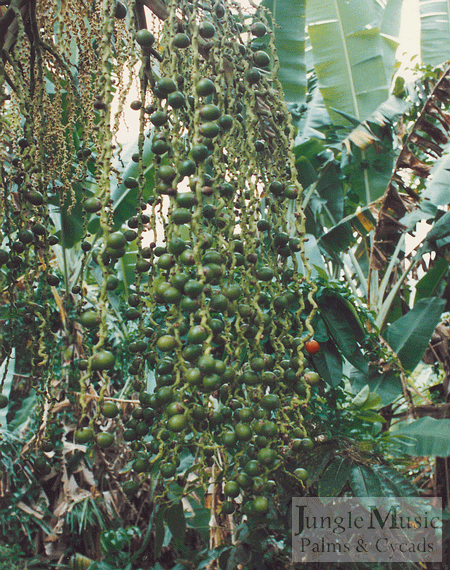
evident but the rest are immature
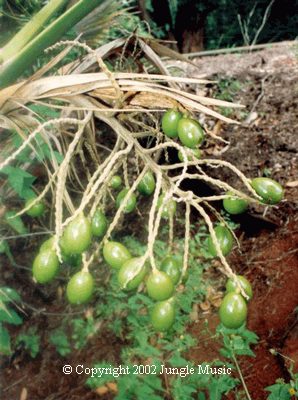
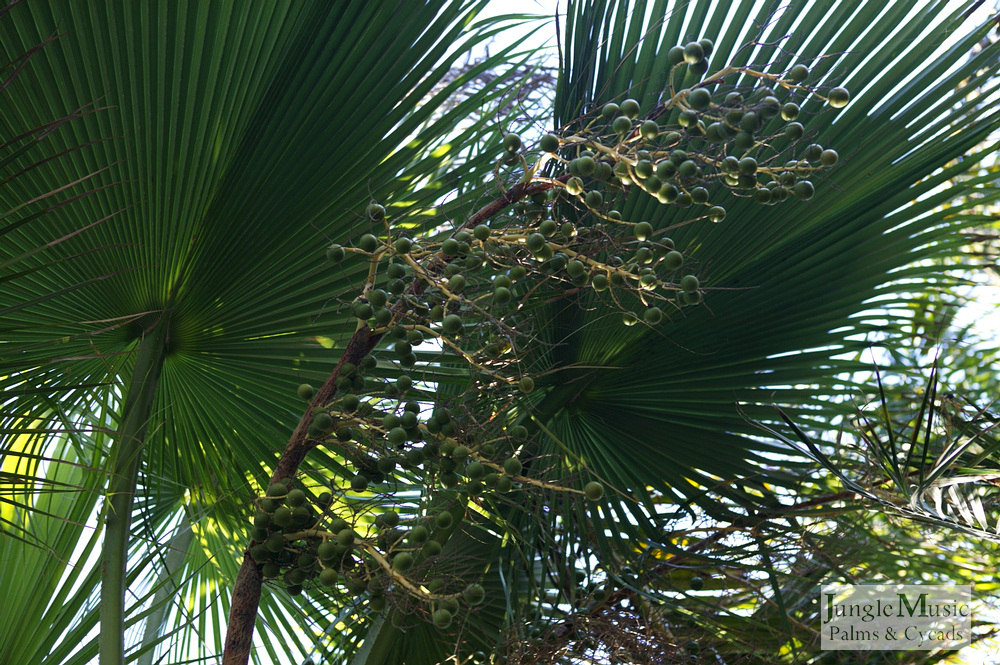
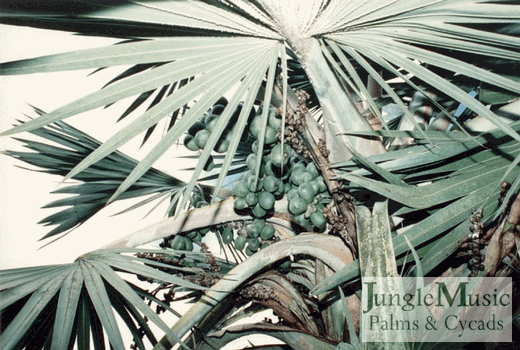
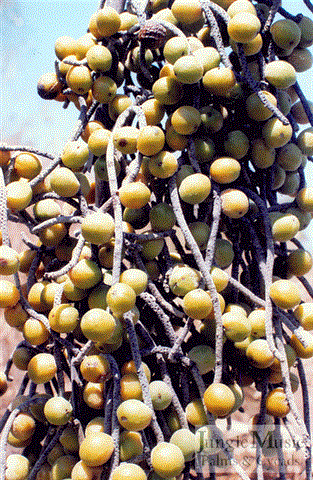
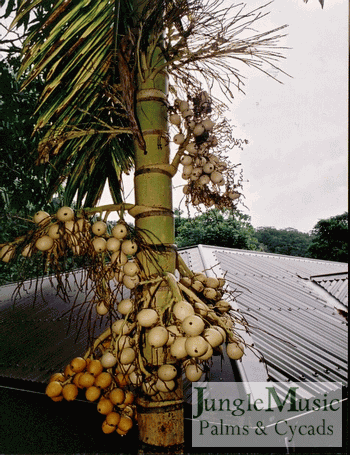

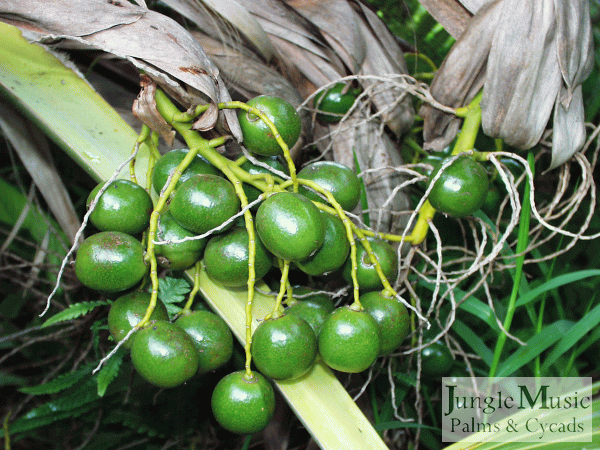
species,
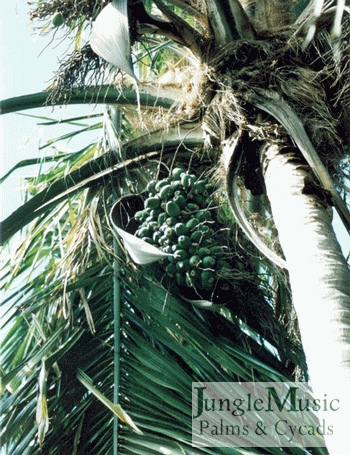
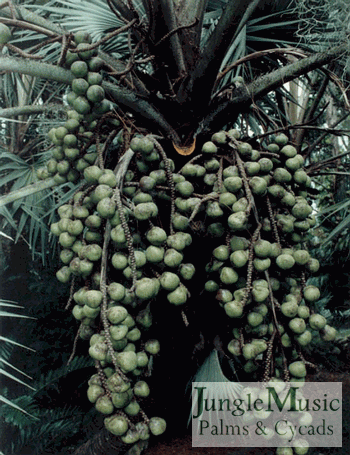
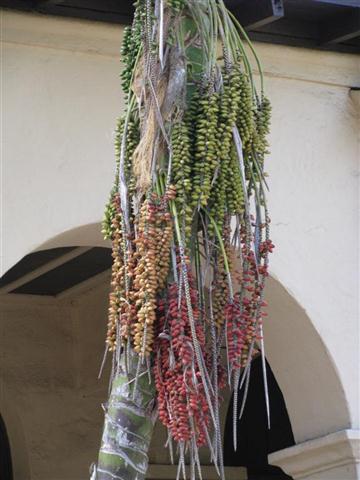
bottom red seeds are ready to be harvested, but not
the green seeds above..
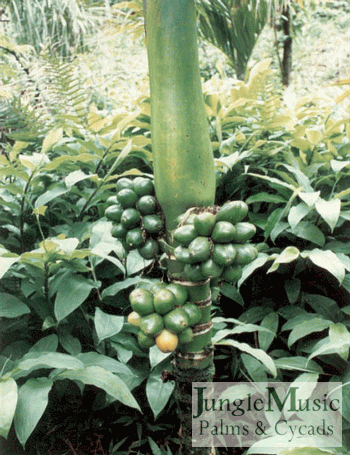
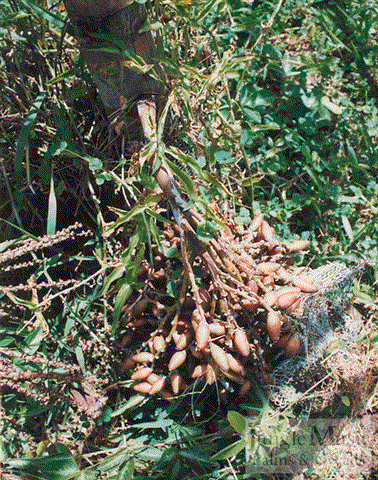
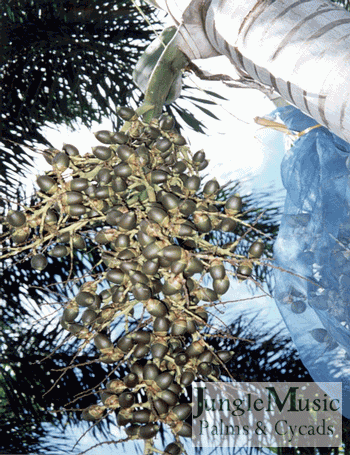
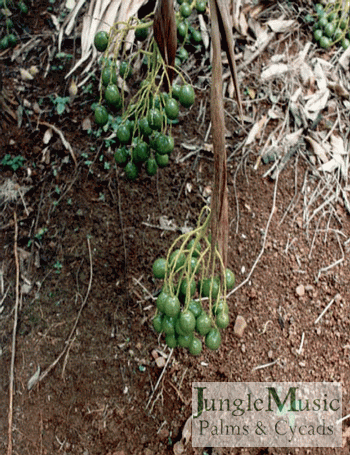
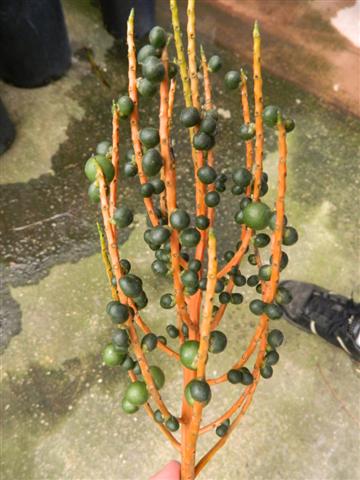
smallest seeds will probably not ever develop
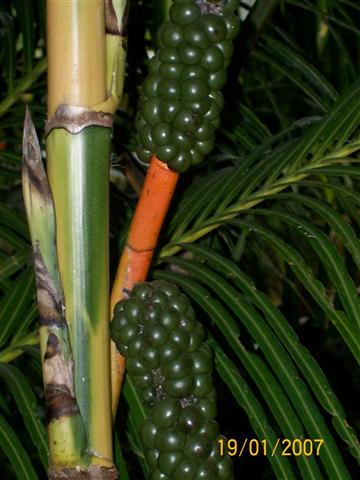
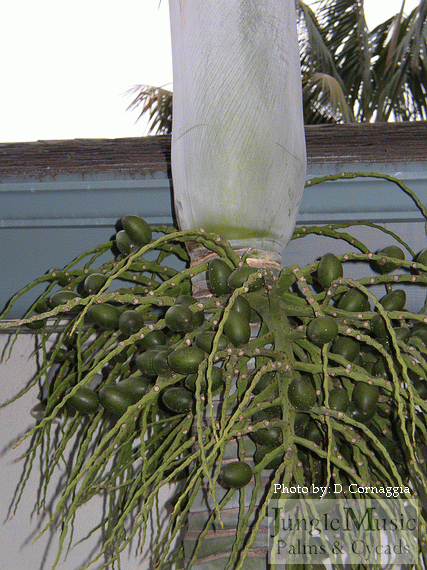
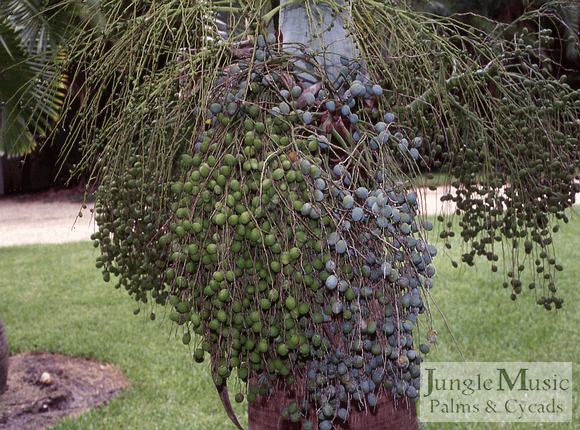
no seeds here are totally mature
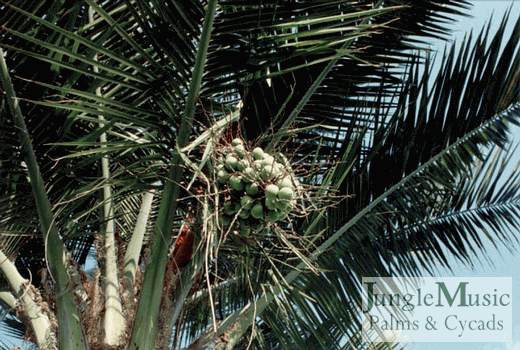
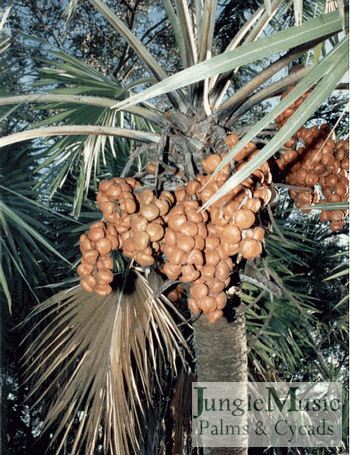
Hyphanae turbinata. Seeds will turn black
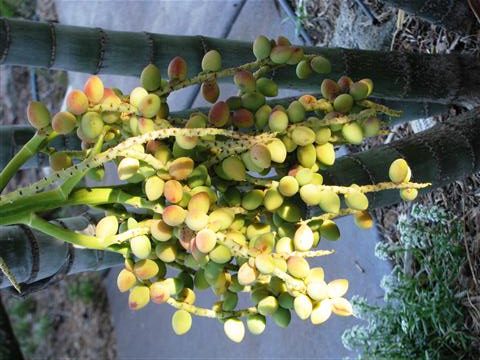
seeds are a faint yellow. They will turn green and
then get red
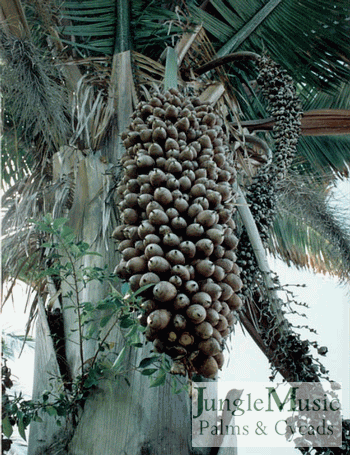
green seeds
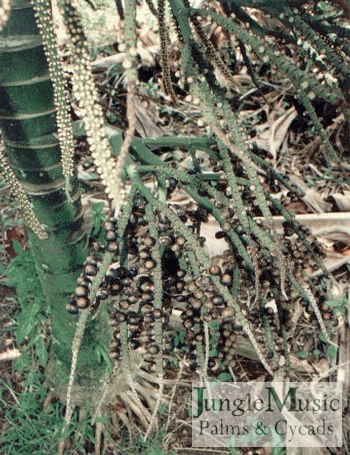
as well as seeds that are not quite mature
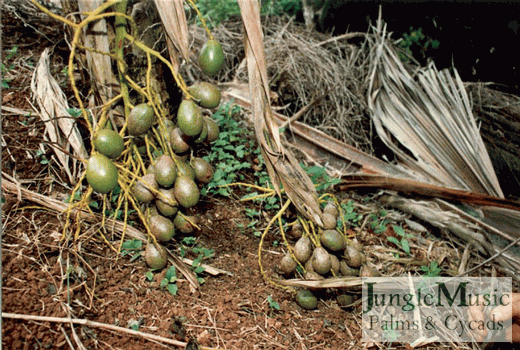
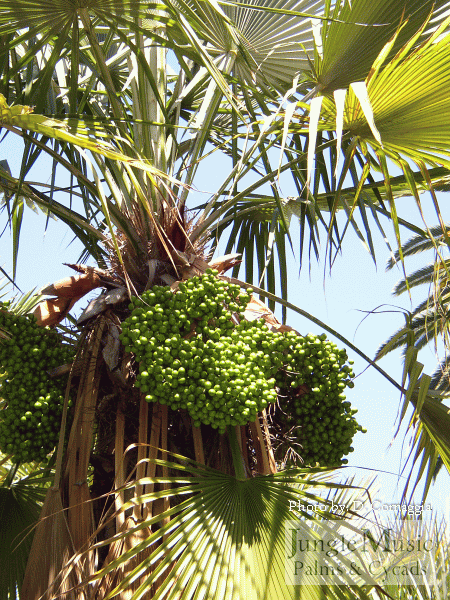
seeds will turn yellow in color.
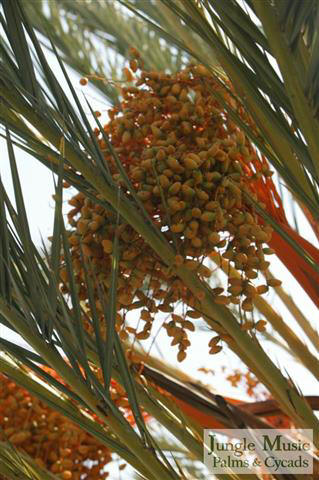
near mature fruit
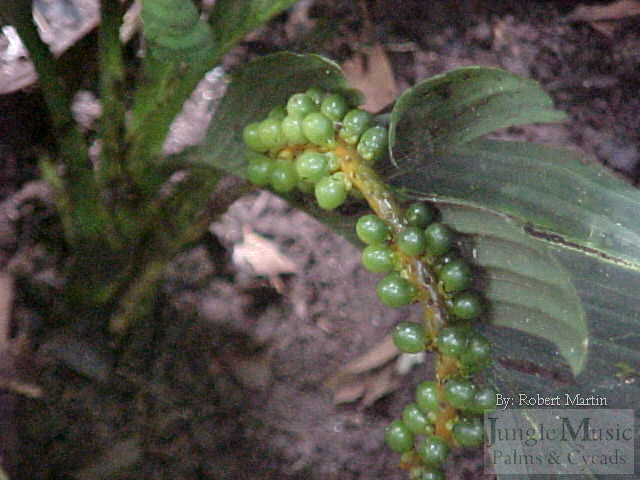
Chamaedorea sullivanorianum

These will darken and turn black with age.
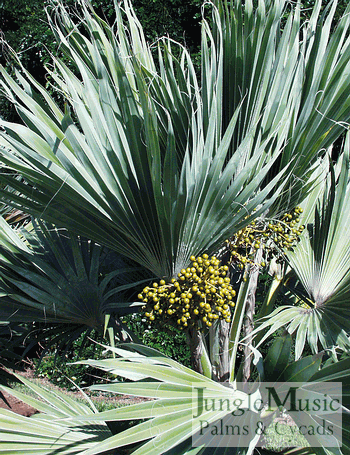
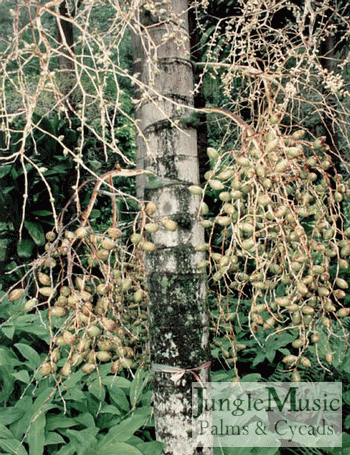
MATURE FRUIT AND SEEDS WITH GOOD COLOR AND SIZE
Remember that palm enthusiasts use the words “seeds” and “fruit” interchangeably. Strictly speaking, you either harvest from the tree or pick up off the ground the ‘fruit” and the seed is contained inside the fruit. The seed consists of a nutritional material called endosperm and a small embryo. The thickness, density and color of this outer fruit is widely variable. It is often very decorative. Colors range from tan or yellow when mature to orange, dark red, purple, brown or black. Green seeds will develop these colors slowly over time. It is proposed that these colors attract the attention of animals or birds who consume the seed or eat the fruit. This implies that such an animal will transfer or pass the seed in another location, helping to promote the survival of the species. However, not all seeds are edible by humans.
The thickness of the fruity layer is variable and can be quite thin like with Howea or Rhopalostylis or very thick as with Coconuts or Borassus. It is felt that this fruity layer may contain growth retardants preventing germination of the seed within. Interior seed shape is also quite variable; from spindle or oblong to round to bizarre shapes with flanges. Mature seeds, when cleaned, almost never pinch between the fingers and also sink in water.
Below are photographs of mature fruit that will soon fall to the ground or could be harvested.
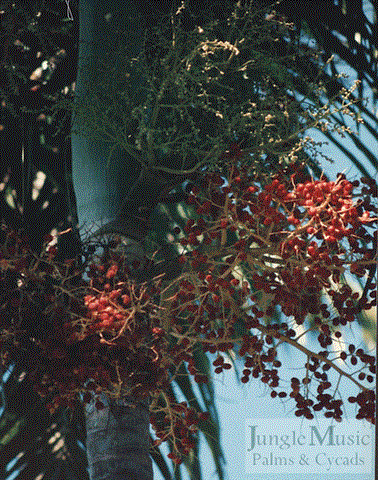
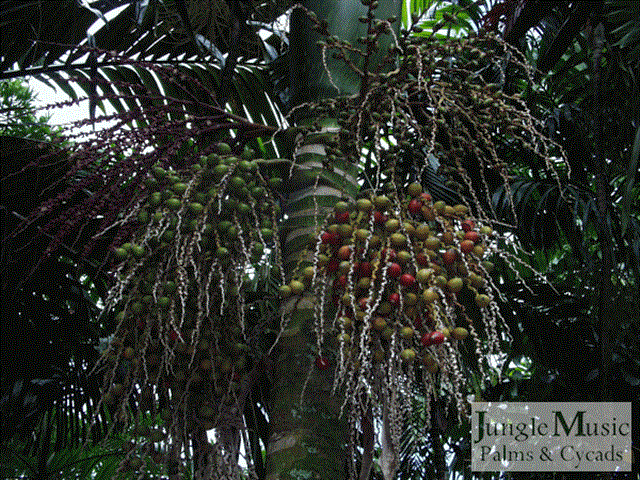
not quite ready
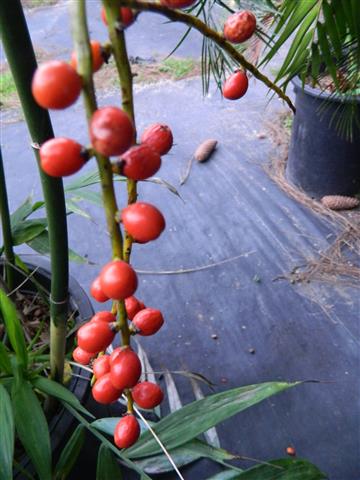
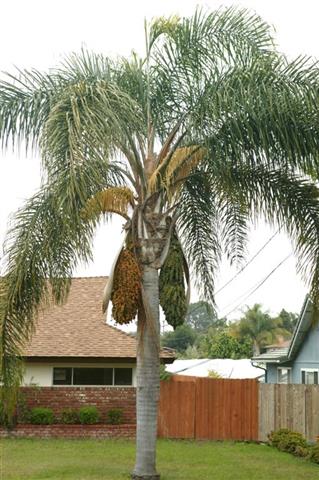
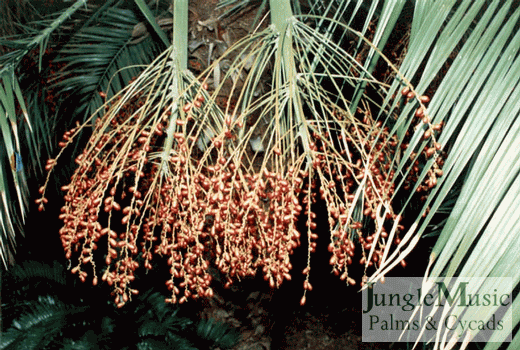
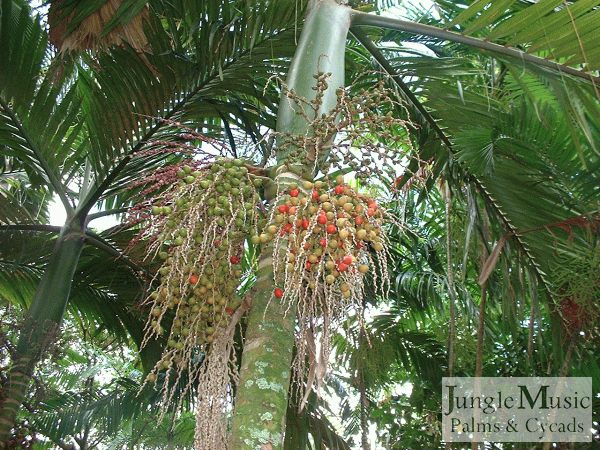
watermelon form. But, although turning color, theyy
are not mature and you should wait a month or so.are not mature and you should wait a month or so

that are not quite mature. Edible fruits need to be
fully developed to taste good.

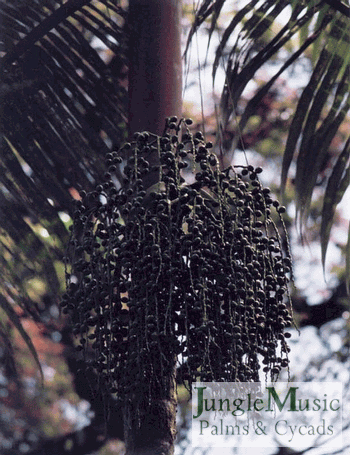
and showing its purple crown shaft
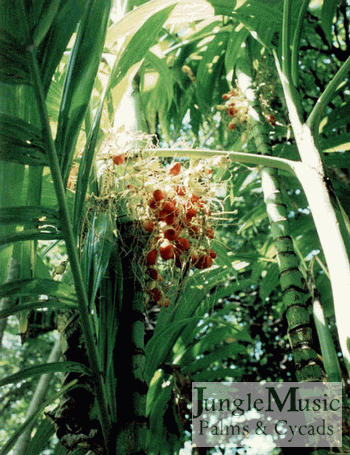

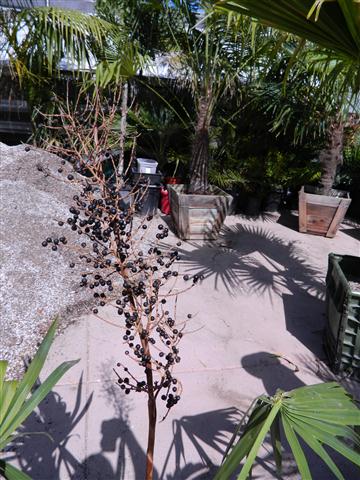
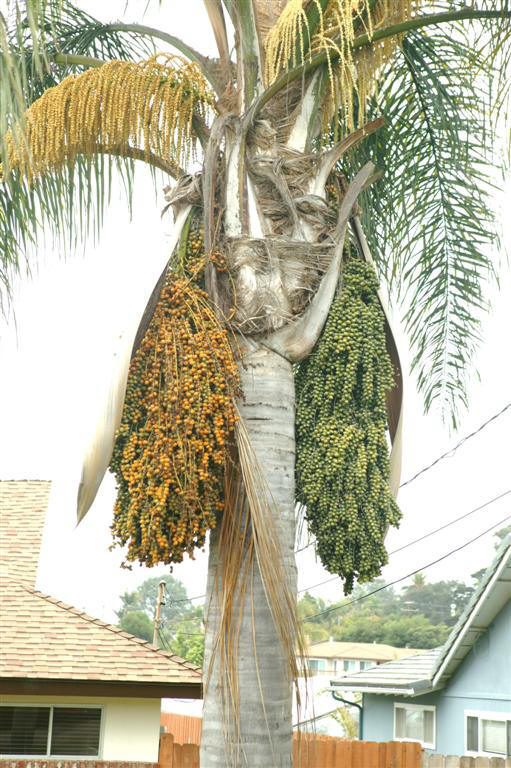
on left, green seeds on right
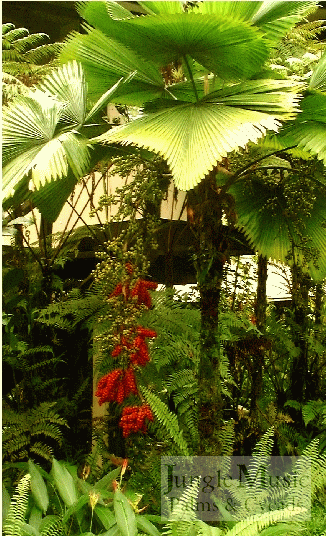
green seeds above.
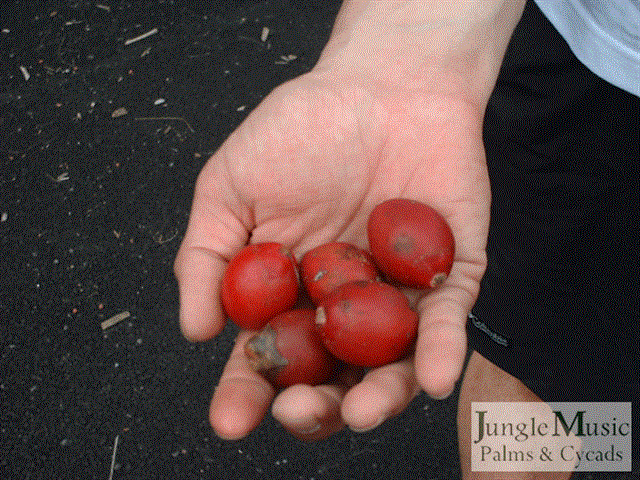
should look like
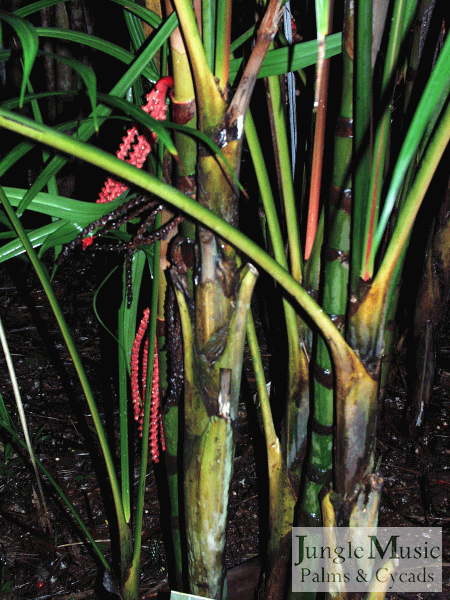
black mature seeds
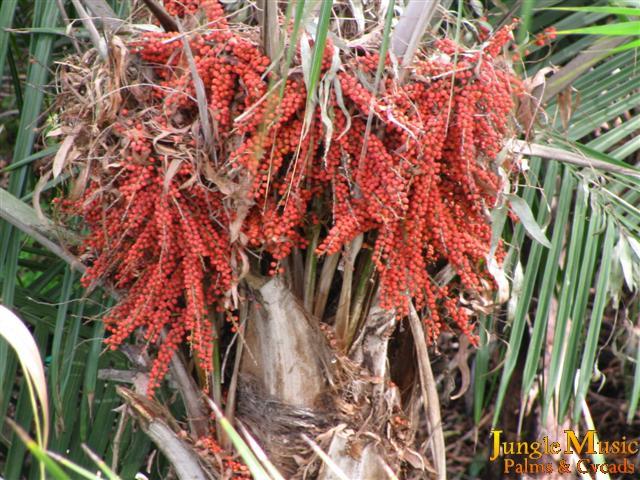
madagascarensis var. monticola. These seeds are
undersized but look great. There was no male plant in
the vicinity of this female and they proved not to be
fertile.
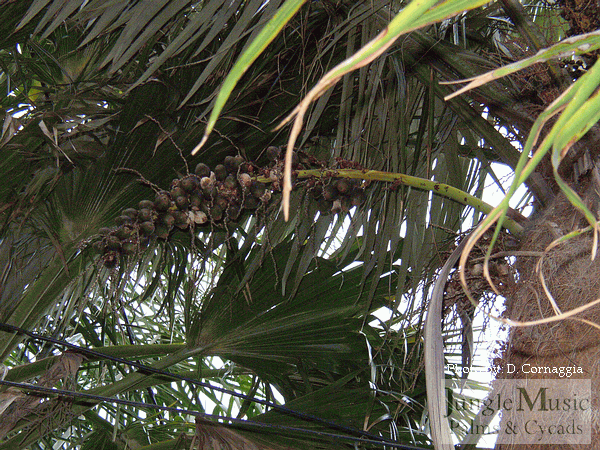
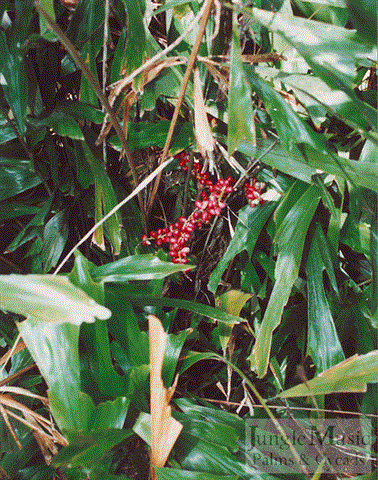
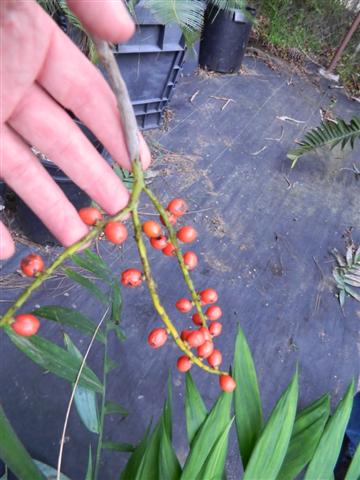
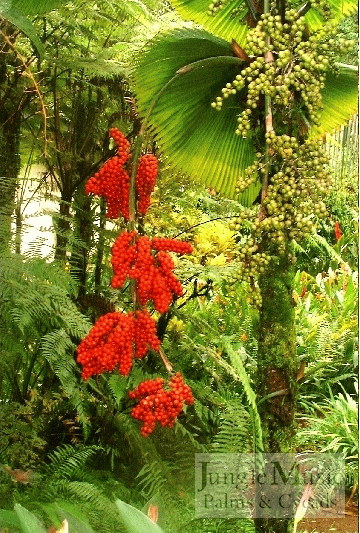
immature light yellow fruit.
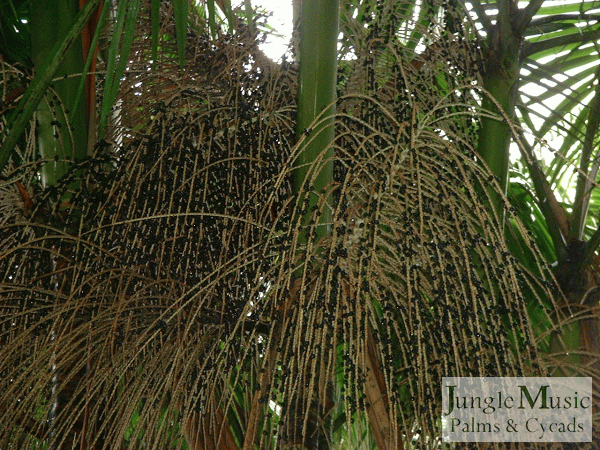
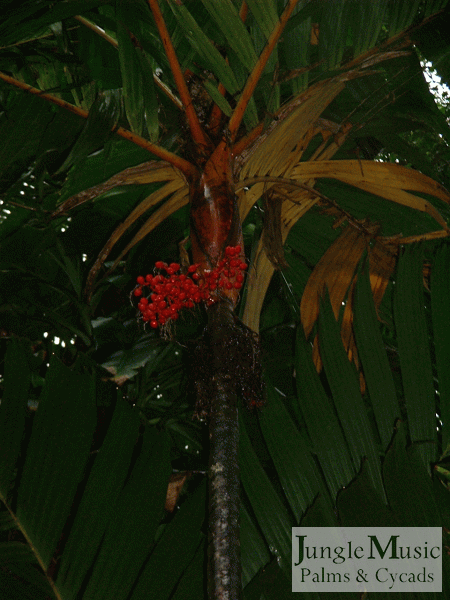
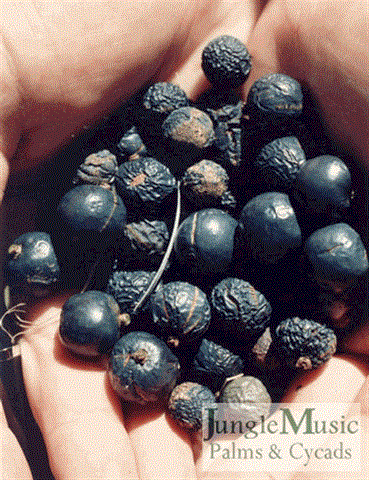
ground. Note the interesting and rare blue color
to the seeds.
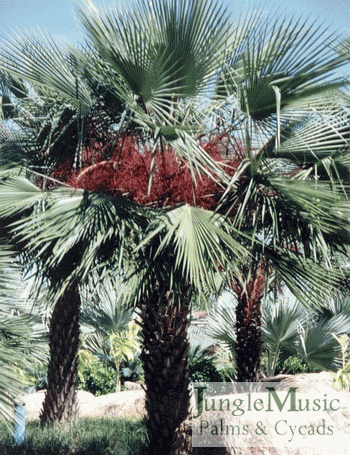
loaded with pink-red seeds. Very decorative.
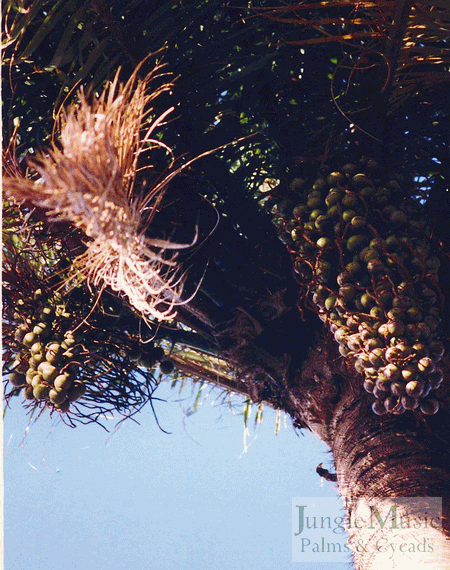
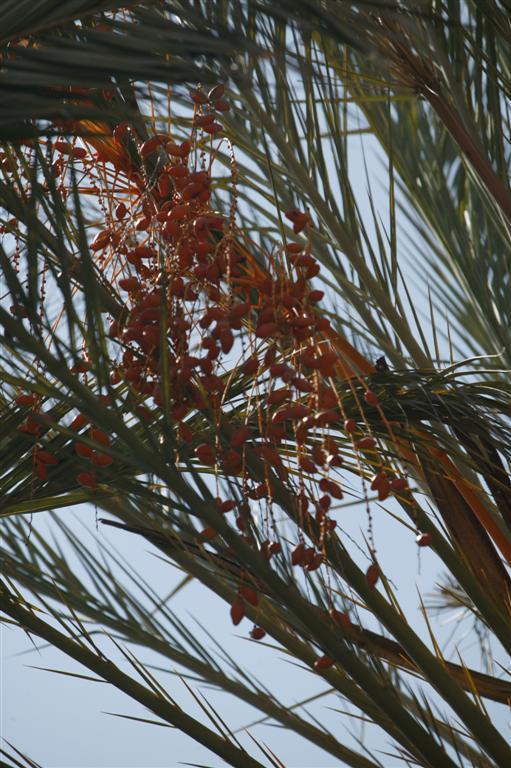
EXAMPLES OF VARIOUS PALM SEEDS
THAT HAVE BEEN REMOVED FROM THEIR FLOWER STALK:
BOTH CLEANED AND WITH FRUIT STILL ON
Recall that I mentioned above that germinators feel there are growth retardants in the fruit that prevent germination. Also, fruit has more of a tendency to rot and attract fungus. So, cleaning off the fruit is imperative. This can be accomplished by animals but is probably going to be the responsibility of the person collecting seeds with fruit on them. This should be done immediately after acquisition of the seeds. Do not store seeds for a prolonged period with the fruit on them. You’ll get rot problems for sure. Remember to wear gloves when doing this as some fruits will irritate the skin. Allow the seeds to dry before bagging or storing them. Or, better yet, pot them up immediately unless you’ve heard they need an “after-ripening” period. The newer the seeds and the more recently they came off the tree, the better the germination rates in general.
Below are some pictures of seeds both with their fruit on and cleaned of their fruit.
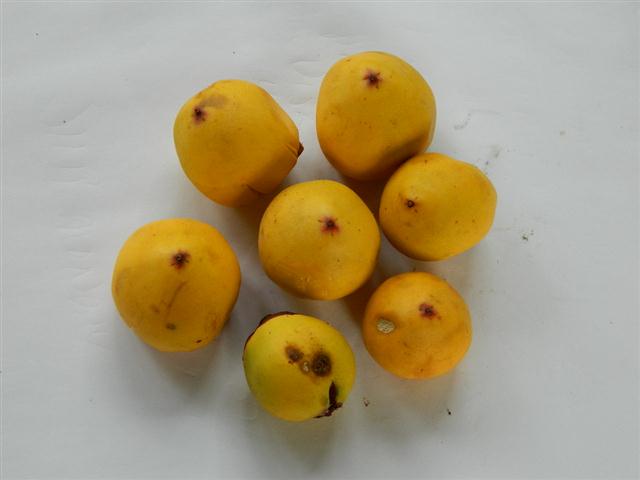
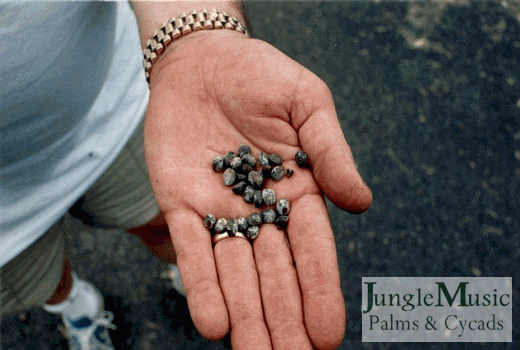
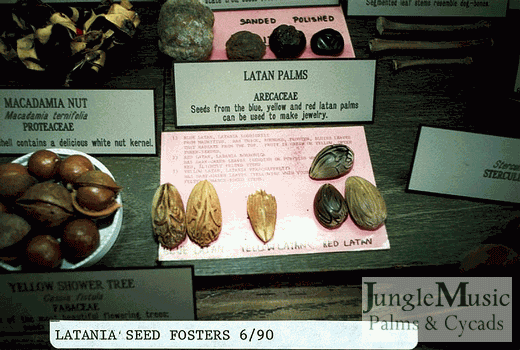
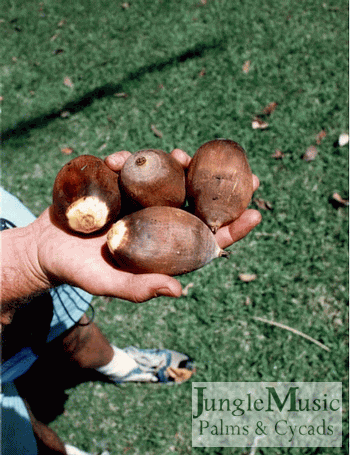
of fruit. But, these seeds still have endocarp with
a hard, woody outer skin and need to be cleaned.
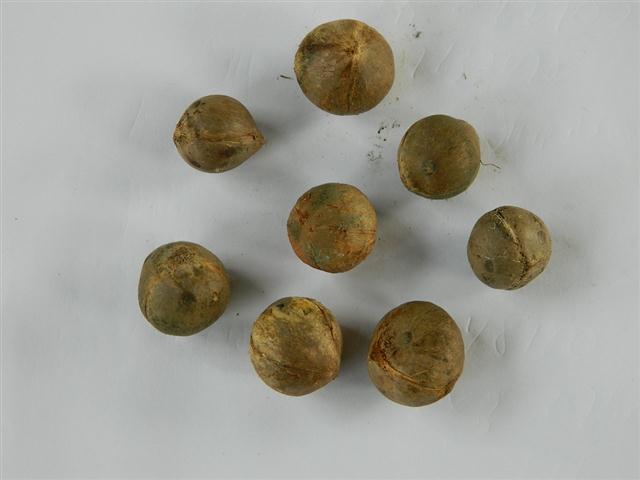
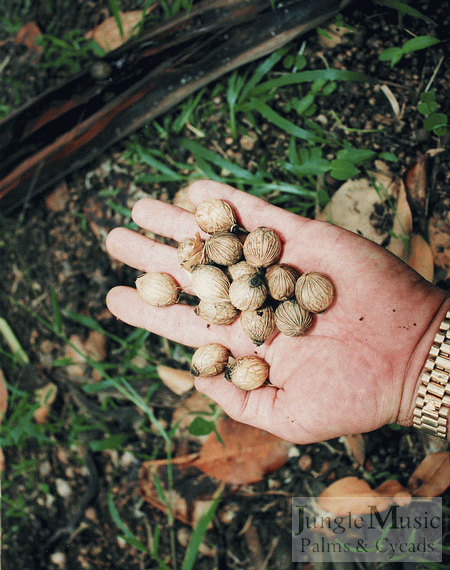
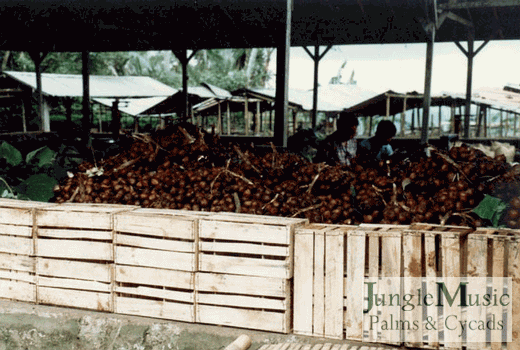
Because these are to be consumed, the fruit is left
on for eating
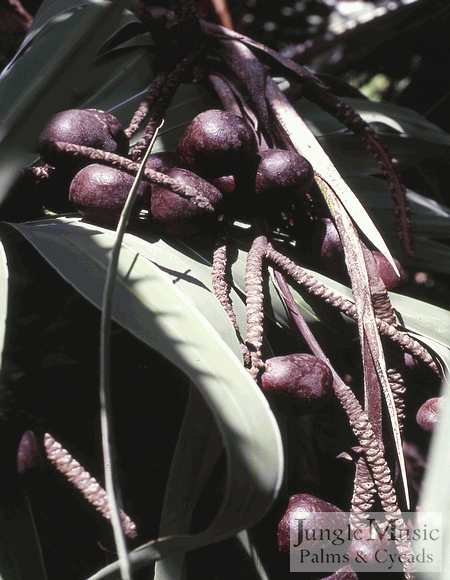
coriacaea which have a woody bark around the
endosperm and still need to be cleaned. Cleaning
these seeds is a lot of work.
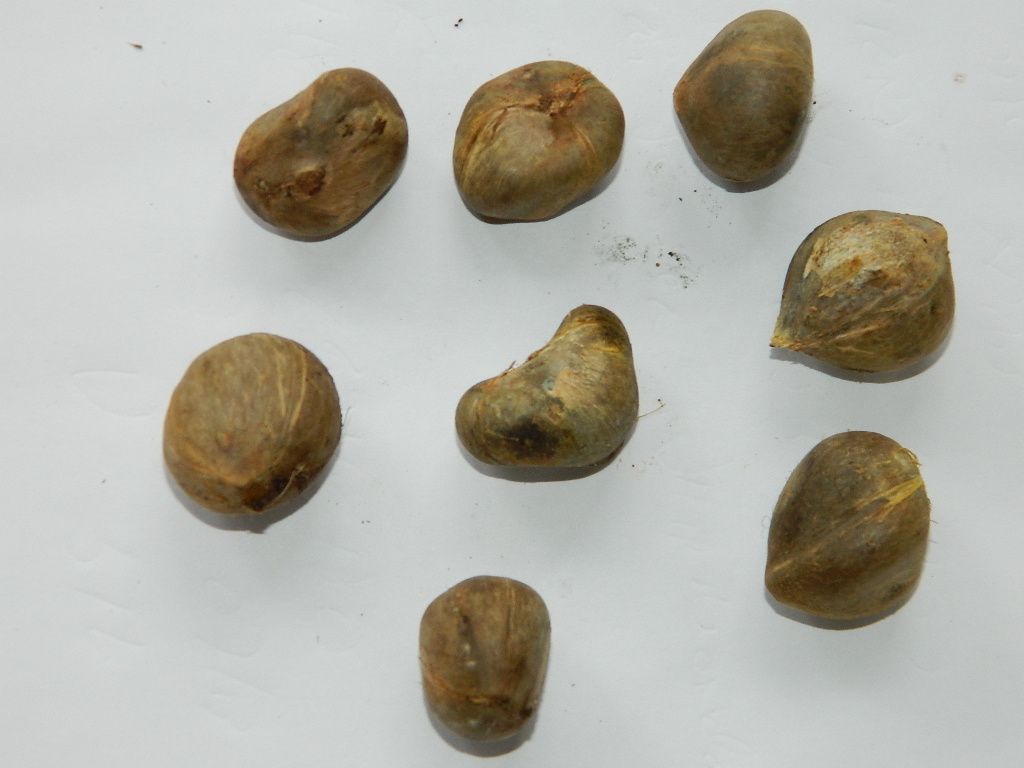
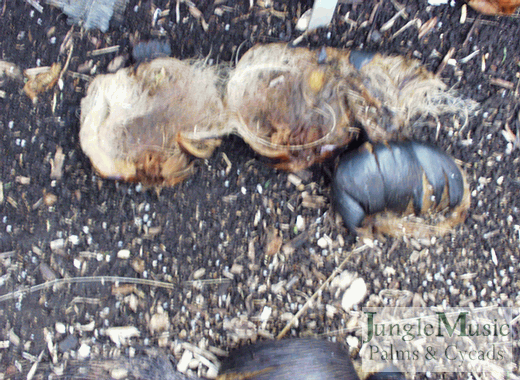
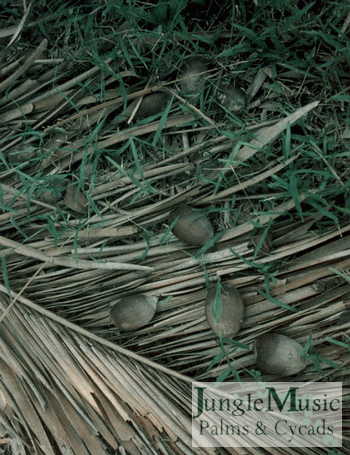
dropped on old leaves below the tree. Hard fruit is
still attached even though they look “clean”..
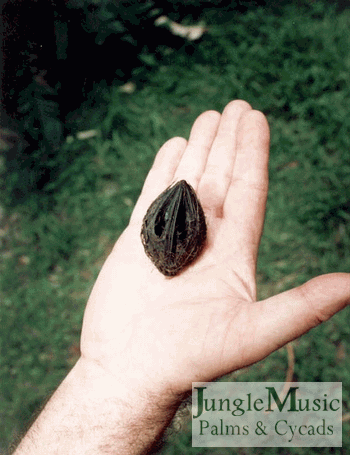
lepidota and has been cleaned of fruit. Note the
unusual flanges on the seed.
SPENT OR DYING FLOWERS WITH NO VIABLE SEEDS
As mentioned above, nature was designed so mature seeds fall easily from the blossoms. Wind or a gentle tap makes them drop to the ground. Once this process completes, the remaining flower parts turn brown and dead appearing. It will initially hold a little color but eventually turn brown and dry. It may remain attached to the trunk for a while but will eventually just drop on its own to the ground. Below are some photos of old, spent flower blossoms.

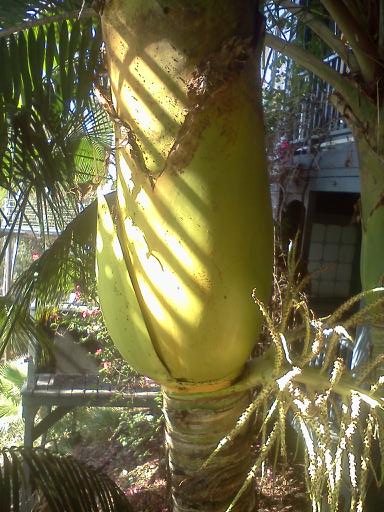
Rhopalostylis sapida were not pollinated and
therefore this flower is spent and will fall soon to
the ground.
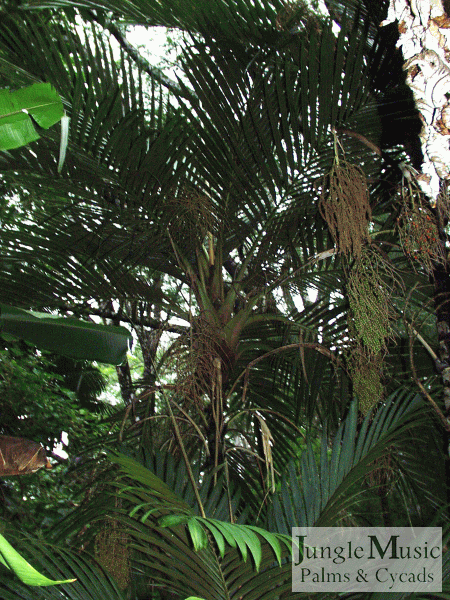
the right
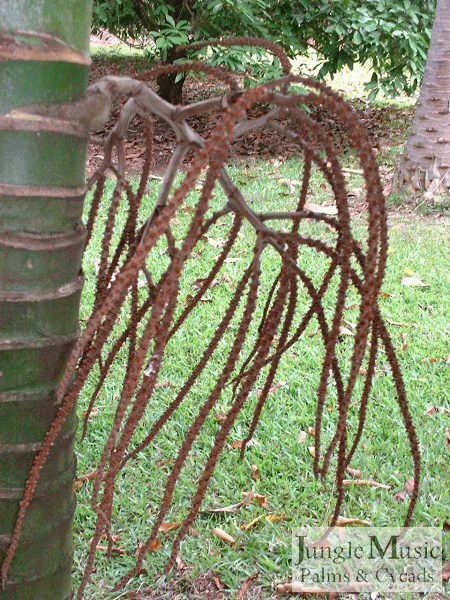
above. This one is dying and will fall off soon.
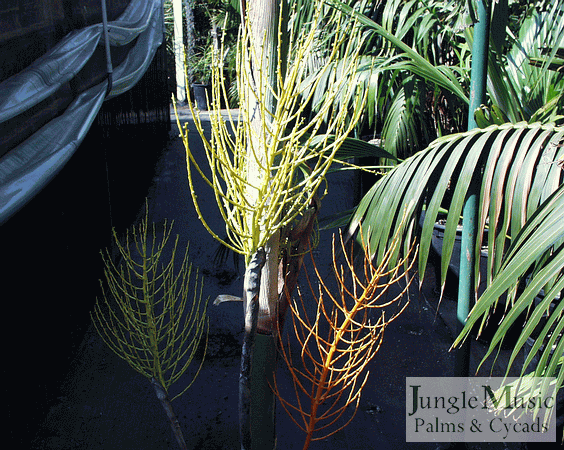
blossoms in three different stages. The blossom to the
lower right is brown, spent and will soon fall off.
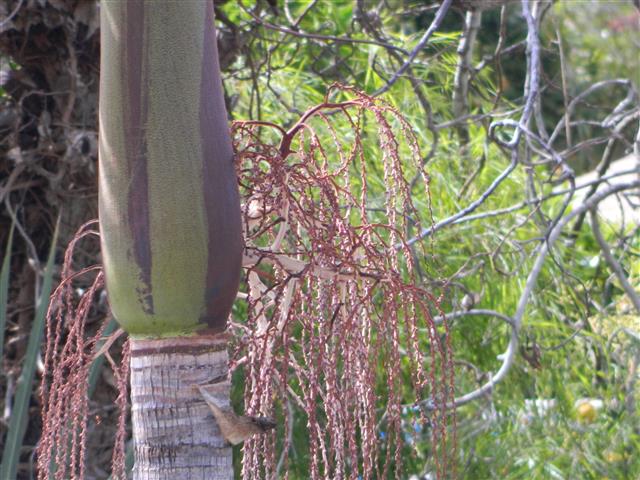
A FEW PALM SPECIES THAT HAVE VERY UNUSUAL OR PECULIAR SEEDS
Pelagodoxa henryana
This almost extinct species is native to the Marquesas Islands with only about a dozen plants remaining in habitat. There are male and female plants, complicating this species’ survival. Seeds are enormous, up to six inches in size and covered with a firm, woody and lobular surface. They are very knobby and almost look like some kind of grenade. Shown here are seeds on or from a domestic plant. This is a tropical tree in terms of growth requirements.
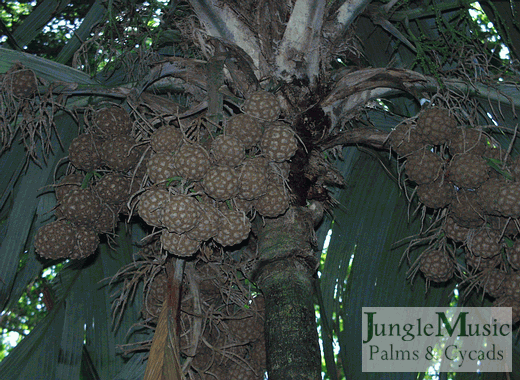
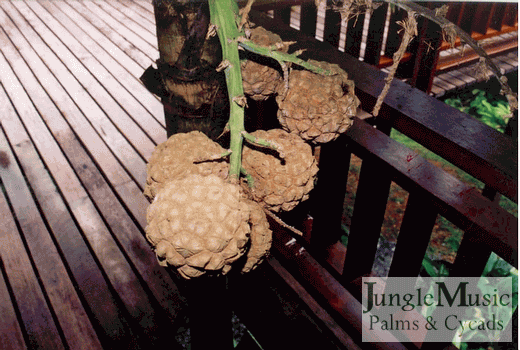

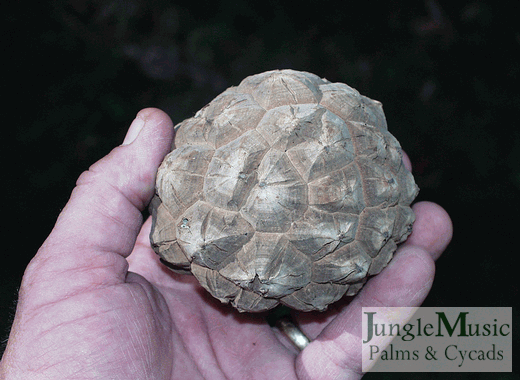
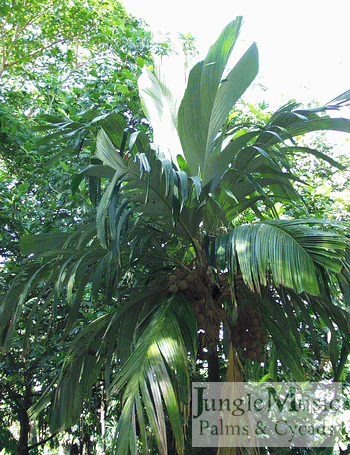
Metroxylon amicorum
This is a tall pinnate palm from Micronesia. It is most commonly known for its attractive, hard and prominently scaly seeds as shown here. The reach sizes of up to four inches and are a source of vegetative ivory. The endosperm of this species is carved and used in jewelry.
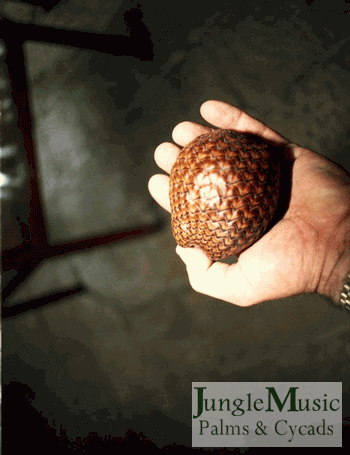
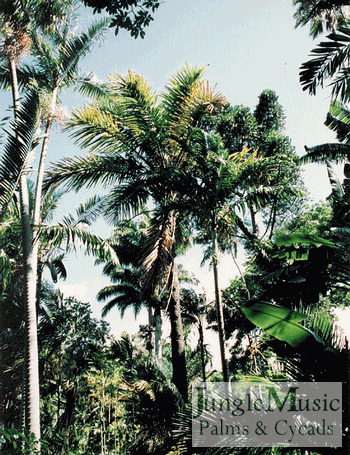
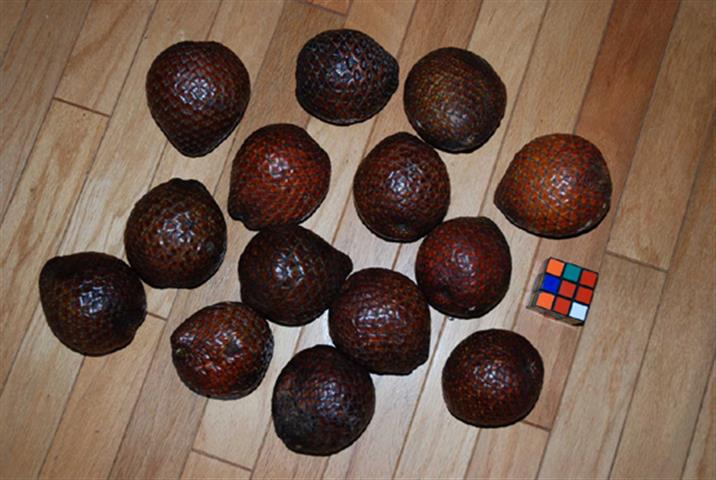
in Hawaii
Cocos nucifera
The Coconut Palm
This extremely important palm from an economic point of view is found worldwide in tropical regions and produces large seeds that, as you know, are edible. The fruits can reach a foot in length and are yellow or orange in color. The thick fibrous husk must be removed to reveal the edible seed inside. This is a species where the actual seed is eddble. When you have “coconut” you’re actually eating the seed inside the fruit. . When you have “coconut” you’re actually eating the seed inside the fruit.
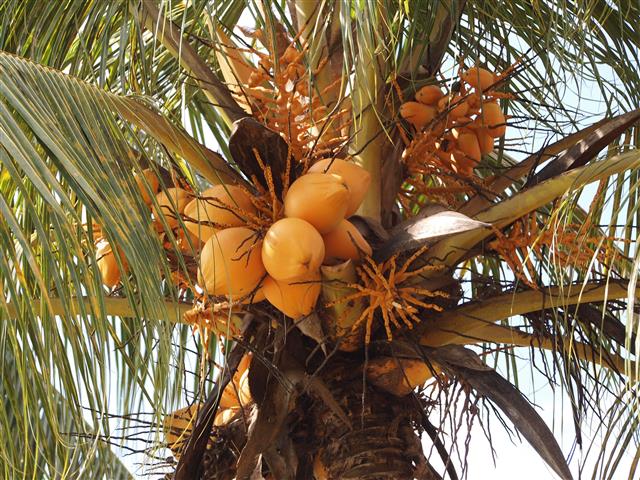
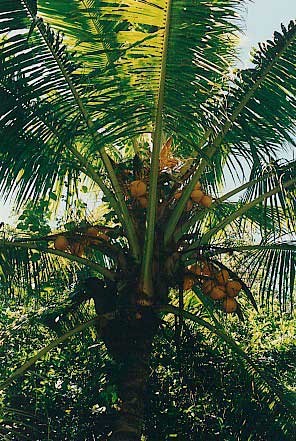
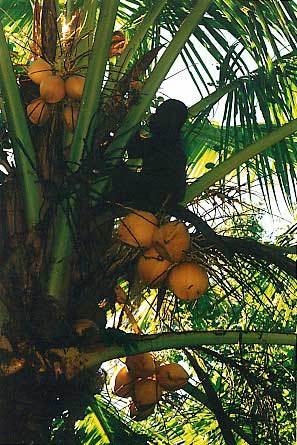
can eat the Coconut, so can we

Attalea (Orbignya) seeds
When I first got into palms, Attalea and Orbignya were two different genera of palms. Now they are combined into one genus. There are about thirty different species of Attalea and all are New World, mostly from South America. They tend to be medium to large trees and are known for their very large, hard and almost woody type of seeds as shown here and above.
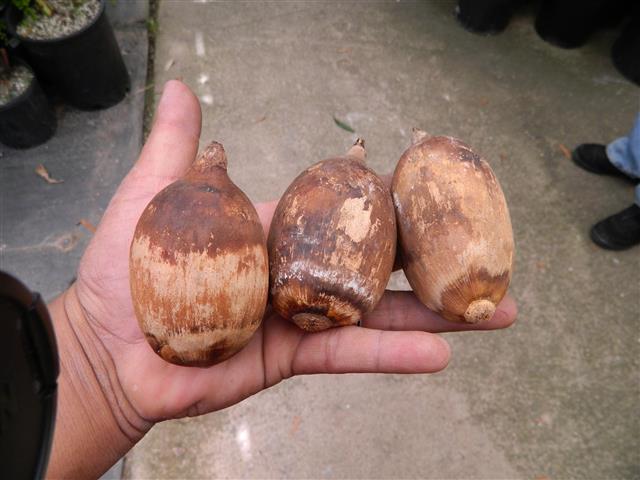
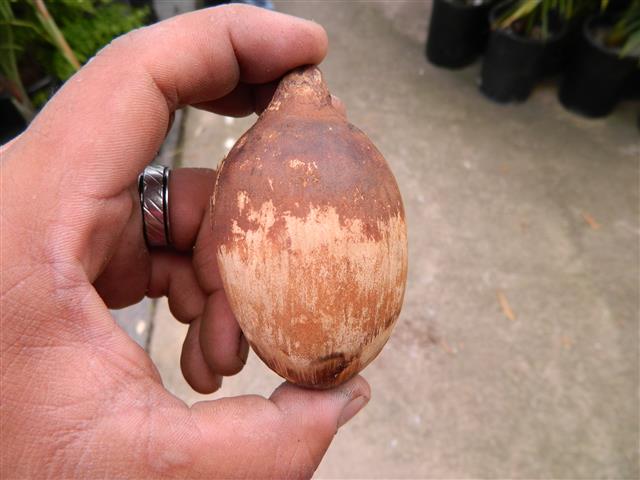
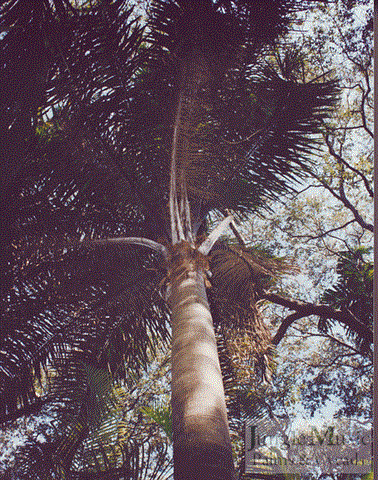
Wodyetia bifurcata
The Foxtail Palm
The species Wodyetia bifurcata is the only species within this genus. It is native to Queensland, Australia and first recognized as a species about thirty years ago. It has unusual seeds that are large, sometimes up to two inches, and prominently grooved with fibrous material. The seeds are very interesting to feel and inspect. They are brown-black in color as shown.
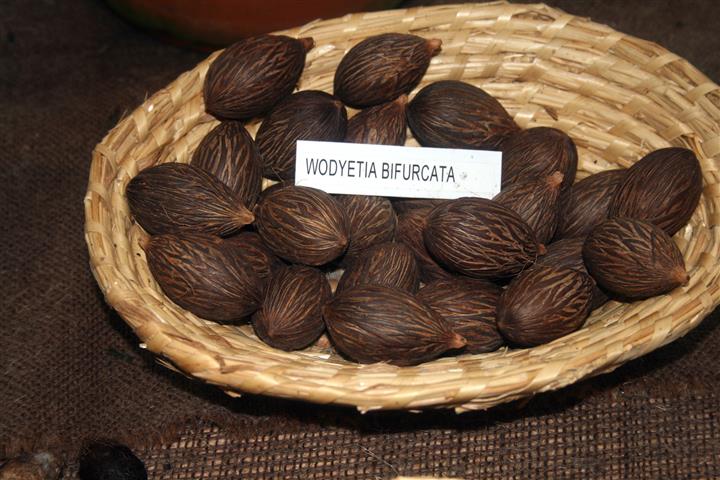

Borassus species
There are six species of Borassuss with habitats ranging from Africa, through Madagascar and Australia, up through Indonesia into Asia. All are massive tropical fan palms with large trunks and very large seeds. With the fruit attached, they can be six inches long. The cleaned seeds are about four inches long and 3 inches wide that are flattened in shape. The fruit is edible.
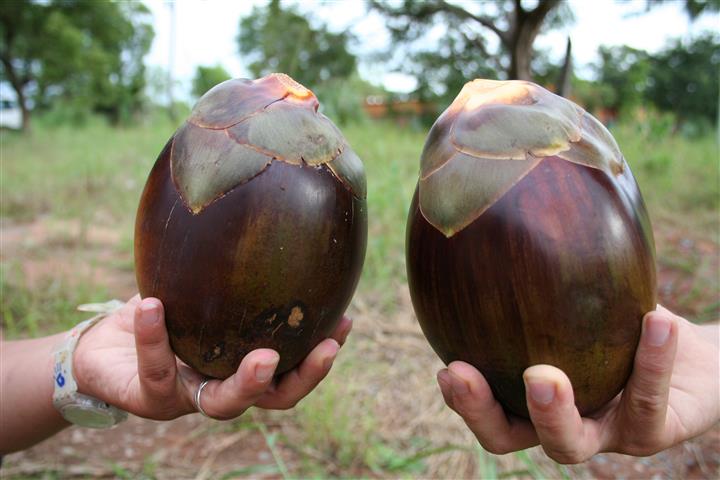

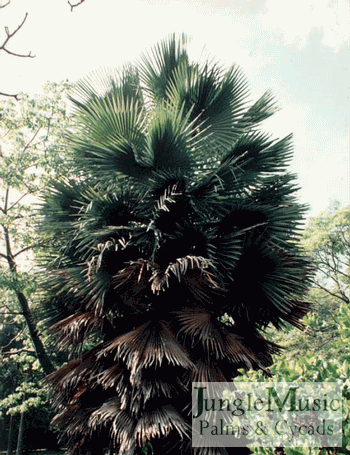
Lodoicea maldivica
This is a monotypic genus and is known for having the largest seeds in the world. This is a tall fan palm with a rather thin trunk and gets to eighty feet tall. It is native to the Seychelle Islands. This is a dioecious species and you need both sexes to make fruit. Seed development on the female tree can take over five years. Seeds can be over 20 inches wide and have a rough, brown surface. Seeds are protected and unbelievably expensive to purchase. Special permits are needed to get a viable seed. It is often said that the seed should be germinated right into the spot it will occupy as opposed to germinating it in a large container. And, it should be guarded and protected because it takes several years to germinate.
There is much lore about the seeds, everything from spiritual importance to medicinal usages. A seed can weight over forty pounds. Comments are made by some that the shape resemble a lower female torso, looking from behind.
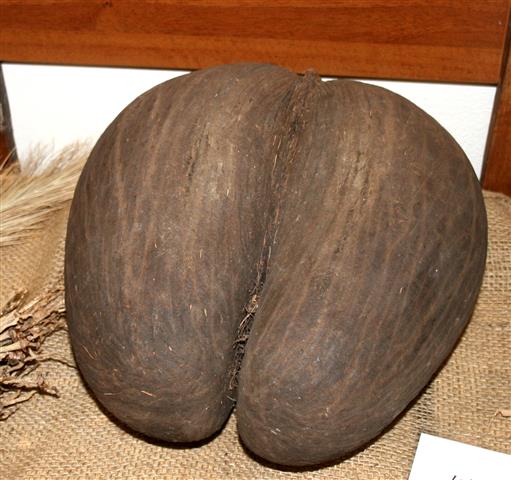
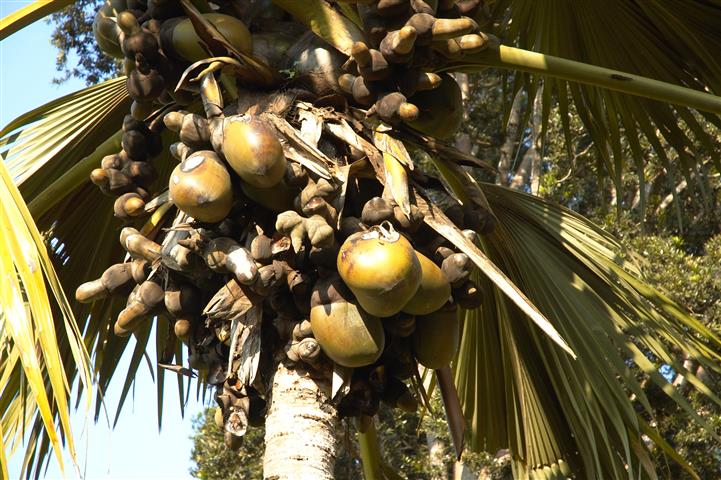
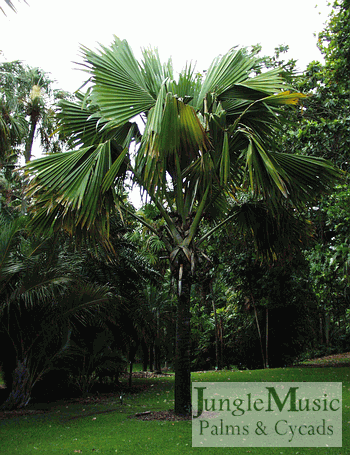
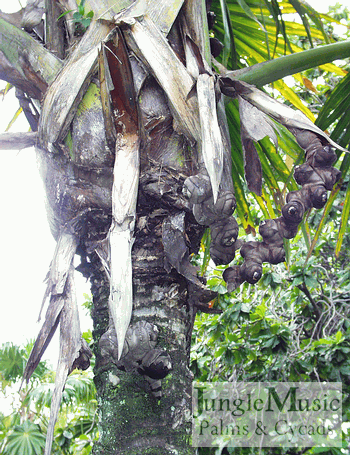
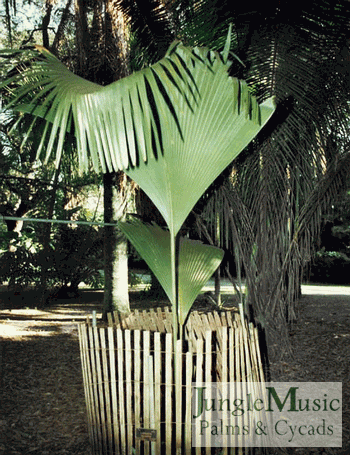
germinated in this location and is being protected
with a fence because of its rarity and value.
EDIBLE PALM FRUIT
At the onset, if you are a novice and just like “to eat every fruit around”, realize that you are living dangerously and, even with palms, are putting your health at risk. Some palm seeds or fruits are poisonous.
I would like to reiterate that people often talk about “edible palm seeds”. You must distinguish between the actual outer layer of fruit and the inner hard seed that’s inside the fruit. When you read or hear that a seed is edible, people are almost always referring to the fruit, not the actual seed. You’ll hear about people making sweet jelly from the “Jelly Palm” (Butia capitata). But, this is made solely from the fruit surrounding the seeds. The seeds are discarded. So, be aware that there is probably little information on the consumption of the inner seed. The only two species where I know the actual seeds are eaten are the Coconut and the Chilean Wine Palm.
There is also the question of “what tastes good” and “what you can eat and not get sick or die”. The fruit of certain palms is known to have a pleasurable taste to some. There are other species where local inhabitants have been known to eat the fruit and there are no reports of sickness or deaths. I can’t comment too much on this latter group. But, I will list below the most common palm species that have fruit that is known to be edible and to some tastes good. I will not deal with potential species that could be eaten (perhaps)
Areca catechu, the Beetle Nut Palm, fruit is a stimulant but also associated with health problems
Bactris gaisepes, the Peach Palm
Borassus species, Old World fan palm that is said to have tasty fruit
Butia capitata, the Jelly or Pindo Palm
Cocos nucifera, the Coconut Palm, the seed is the edible part we all know
Elaeis species, the Oil Palms, source for cooking oil
Euterpe oleracea, the Acai Palm, source for Acai Berry juice
Jubaea chilensis, the Chilean Wine Palm, sap used for wine making and actual seed is said to be edible
Phoenix dactylifera, the True Date Palm
Salacca species, edible fruit eaten in Indonesia and Asia
Serenoa repens, the Saw Palmetto. Seeds (ground up) are used as a prostate medicine and thus edible
Photos of some species with edible fruit or seeds shown below.
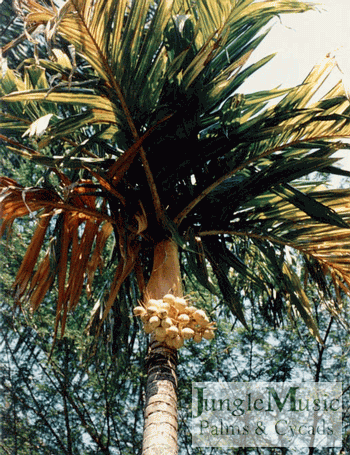
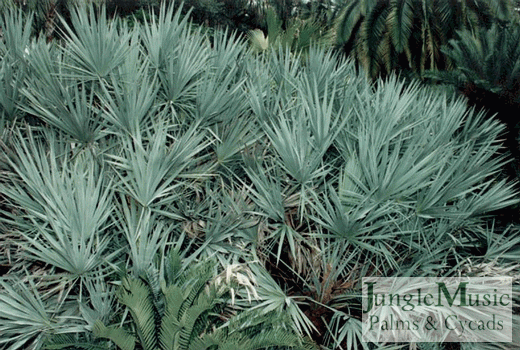
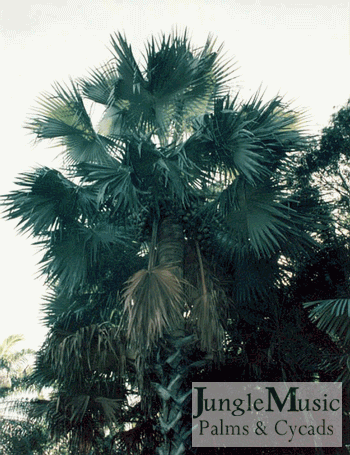
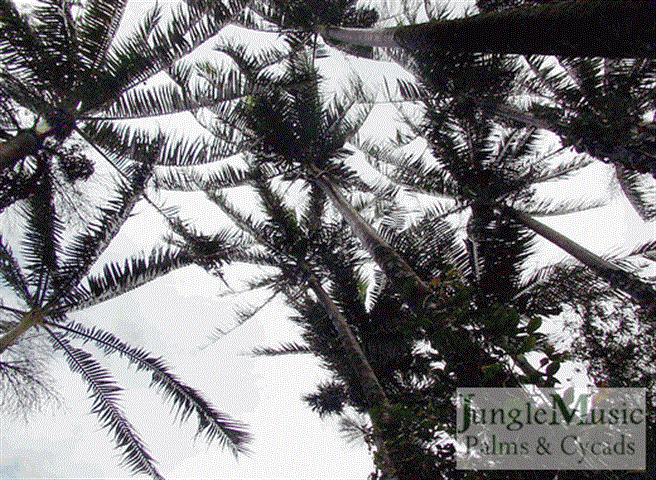
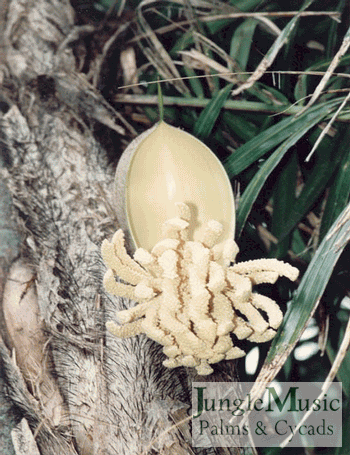
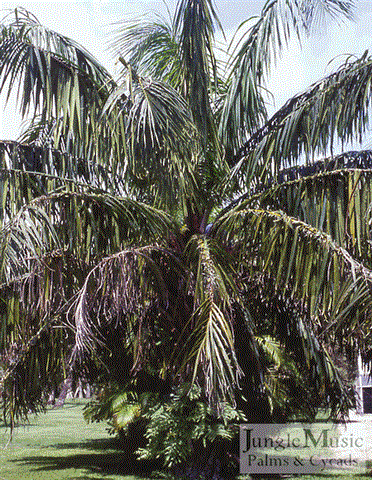
WHAT DOES THE INSIDE OF A PALM SEED LOOK LIKE? AND, HOW TO SPOT BAD SEEDS
If you were to cut a palm seed in half, it would show you the various layers to the seed as described above. You would see the thin outer epicarp and just inside this the fruity layer of mesocarp. If it were a clean seed, you’d only see the endocarp (outer layer of the cleaned seed) and the inner endosperm. You may also see the small embryo embedded within the endocarp.
Endocarp is usually described as being of two types: homogenous and ruminate. Homogenous endocarp is more uniform in appearance. It is usually white and looks like coconut meat. Ruminate endocarp looks like ice cream with swirls of color mixed in. The reason I mention this is because taxonomists use these types to distinguish different species of palm seeds.
The appearance of the endocarp is critical. Old or nonviable seeds may have discolored endocarp. The inside of rotting seeds may be dark, black, powdery, dried out or display frankrot. Bad seeds often float in water.float in water. This is because bad seeds usually have a hollow cavity in the side making it buoyant. One comes across such seeds by picking up old seeds off the ground and purchasing seeds that have been stored too long. This is why freshly collected seeds off the flower have proven to be the best quality seeds.
Things to check for to judge quality of seeds include:
1. Weight in the hand: If a seed feels very light and has no weight for its size, it probably is not good.
2. Fresh and youthful appearance overall. Old seeds look faded and dry
3. Cut open a representative seed. The endocarp should be white and meaty. You should never see a large cavity within the seed.
4. Float test the seeds. Viable and high quality seeds almost always sink in waterr.
Photos below show the inside of palm seeds.
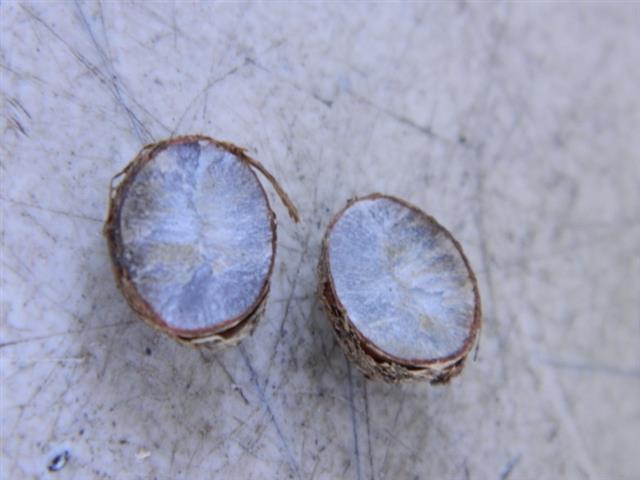
cavity, the flesh is light colored. This is a homogeneous
type of seed and appears to be a good, viable seed.

central cavity and is obviously a bad seed and will
never germinate.
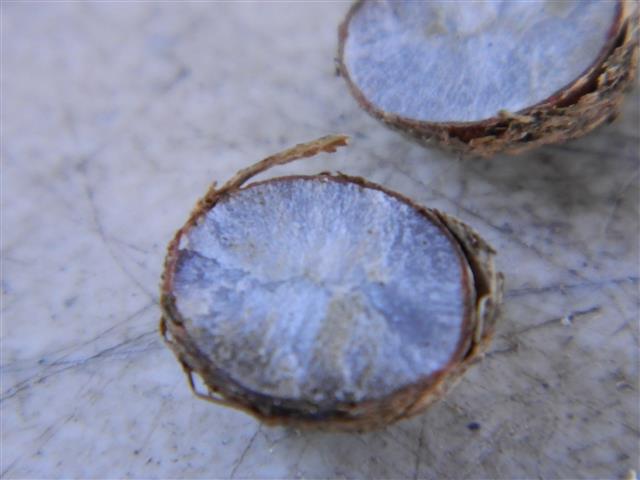
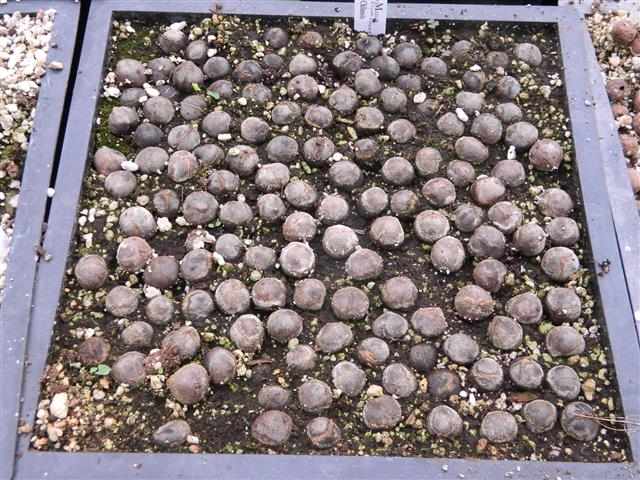
but none have germinated so far. But, in time, they will.
Note that the seeds are not black or rotten looking.
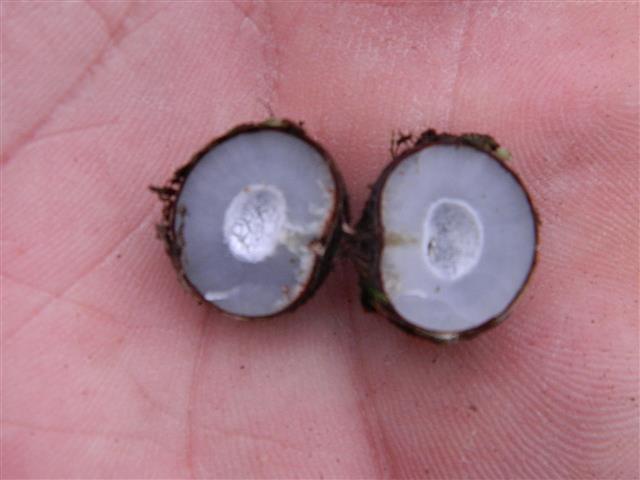
central empty cavity. This appearance may mean that
the seed will rot and is not viable.
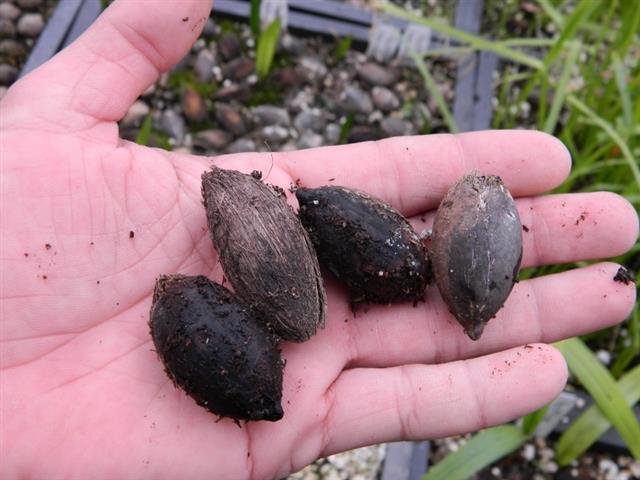
a germination tray. Not the underside is dark from water
stains, but the other half is normal color. These seeds
are still good, awaiting germination (hopefully)
CONCLUSION
There are approximately 3000 or more different species of palms and all have their own unique flowering characteristics and fruit. Although biologists and palm enthusiasts the world over use the words “fruit” and “seed” interchangeably, there is a difference between the two. The palm seed, which germinates and makes a plant, is located within the fruit with its protective coat. When palm seeds are green, they are seldom ready for germination and have poor success rates. One must wait for a palm seed to develop its mature size and color. Mature palms seeds are quite colorful with colors of black, brown, pink, orange, yellow, or red. They essentially are never green in color. Good seeds are firm to pinching and usually sink when floated in water. The outer fruit layer must be removed for proper germination. This outer fruit may contain growth inhibitors which prevent germination and the fruit may lead to rot of the seed. All seeds develop on palm flowers and, once fruiting is complete, the palm flower drops to the ground over time. Some species of palms die after flowering. Some palm seeds are edible but one must always consult authorities or references before eating palm seeds. Finally, there are some very bizarre and unusual palm seeds as described above.
Thank you for reading this article. Feedback is always welcome.
Phil Bergman
- PALM TREES, CYCADS & TROPICAL PLANT BLOG - October 1, 2020
- TRACHYCARPUS
The Windmill Palm - September 30, 2020 - FAN PALMS –
PALMS WITH CIRCULAR LEAVES - September 29, 2020
